As most regular readers have probably sensed, I’ve been on something of a survival “journey” over the past couple of years. Though I had a lot of head-knowledge about survival I didn’t practice much of it. Over the last couple of years I’ve invested a lot of time into bettering my survival skills. Gathering food in a survival situation has been pretty low on my list. Recently I’ve begun to correct that by learning some wild edibles of the southern Appalachians.
This article contains affiliate links.
Disclaimer
Right out the gate here: do not rely on this blog post alone to identify anything before you eat it! Getting information from an expert source is pretty important when you’re taking your life and health into your hands, and I am NOT an expert on wild edibles. I recommend getting an expert to teach you wild edibles in person. If this is impossible for whatever reason check everything through multiple, trusted sources. Remember, this is potentially life-and-death.
Everything presented here is done so in good faith, but I can’t guarantee I haven’t made a mistake somewhere. This article doesn’t purport to explain how to identify all these plants or all their potential side effects. I’m not a botanical writer, and I’d be afraid to take a stab at exactly what to look for to ID plants. Again, check, double check, and seek expert instruction before eating any wild edible.
Ultimately you are responsible for anything you eat, so behave accordingly. You – not me or this blog – are responsible for your actions.
My De-Emphasis of Survival Food
Since I began writing about survival topics I have definitely downplayed wild edibles. I have even largely overlooked them in my own studies. This is for several reasons. The first is that food just isn’t a very big survival priority. You can live for a long time without food. Remember the Rule of 3s: you can survive 3 minutes without oxygen, 3 hours without shelter, 3 days without water, 3 weeks without food.
Secondly, wild edibles are a very difficult topic to really master. What is available changes depending on your environment. The stuff I can find in the woods here isn’t the same as what someone can find in the Pacific Northwest or the Southwestern US. It also changes depending on the season. In late August I can eat my fill of wild blueberries here, but they’ll be green and inedible in July and gone in September. Knowing what is available when takes a lot of work. And some edibles are edible at certain times and poisonous at others as we learned from Into the Wild.
Fortunately I learned a lot of wild edibles when I was a kid. A lot of this information has come back to me. The more time I spend in the woods the more readily I’m recalling this stuff (don’t worry – I’m also double- and triple-checking, not just relying on very old memories!). I’m also regularly around some folks that know a lot about this sort of thing; that helps a lot, too. Recently I decided to start recording all the wild edibles on my property. Then I branched out just a bit and started looking at wild edibles on my hikes.
Almost every plant here I have encountered both on my property and in the wild on hikes. I have collected a ton of photos, so I thought I would share some of them here.
Wild Edibles of the Southern Appalachians
Wild edibles is important knowledge, both for wilderness survival and preparedness. The implications for wilderness survival are obvious. For preparedness maybe the importance is harder to see. My grandfather lived through the Great Depression. As I tell people only half-jokingly sometimes, the family business was “being poor.” My grandfather (who is long passed) ate a lot of this stuff as regular supplements to meals.
Take the time to learn what is available in your area now. Once you are out in the hinterlands in a survival situation – or the internet has been out for three weeks – is not the time to learn. The time to learn is now. This big gap in my survival knowledge is finally getting filled and solidified.
I intend for this post to be a “living” post. I hope to update and bump it back to the top as I learn more wild edibles. In fact, there are a already several I plan to add that I just don’t have adequate photos of. I also hope to update photos periodically to show these plants in various stages of growth.
As I have begun to learn more about wild edibles I’ve also learned quite about about poisonous or otherwise dangerous plants. I will hopefully be creating a companion post with photos of many of those soon.
Edible Greens
Wild greens are a pretty reliable source of wild edibles during summer months. Berries and fruits come and go, each one being available only “in season.” Greens stick around for a long time. A general rule I’ve discovered is that the smaller and younger the leaf, the better. Older, larger leaves tend to be bitter and tough. Let’s look at some wild greens.
Dandelions
Dandelions grow nearly everywhere (at least they seem to until you start looking for them – it took me a while to find any in my yard). I only started looking recently, after the yellow flowers have turned to fluffy seed-heads. Every part of the dandelion plant is edible, including the flower and roots. The leaves are the most prolific part of the plant, however.
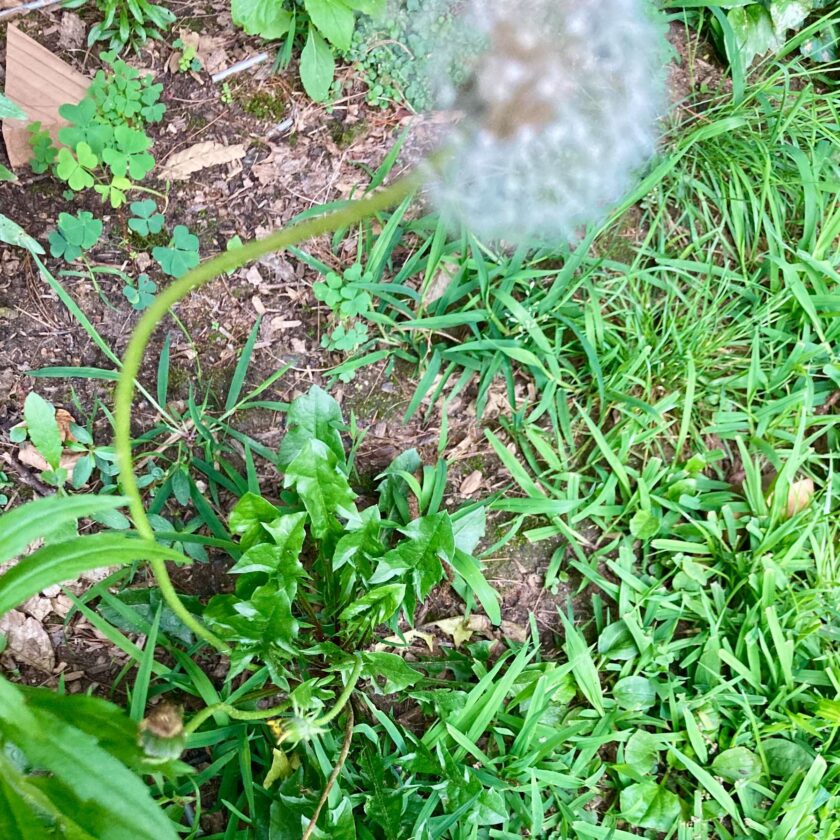
Not only is dandelion a “wild” edible, dandelion greens are also cultivated and sold in some grocery stores. It is worth noting that dandelion contains a natural diuretic, meaning it makes you urinate a lot. You won’t want to each much dandelion if you’re in water-conservation mode.
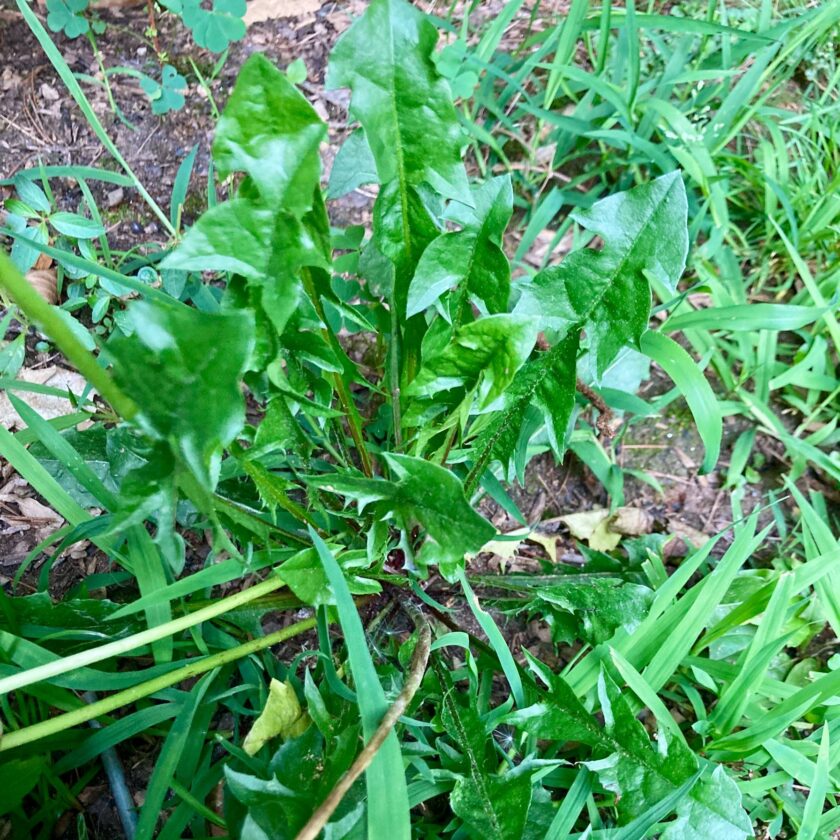
Dandelion is a good example of a wild edible that is no only an wilderness food source. Dandelion grows just about everywhere, including cracks in sidewalks. Here it is growing out of a crack in my driveway along with two other edible plants: plantain and creeping Charlie.
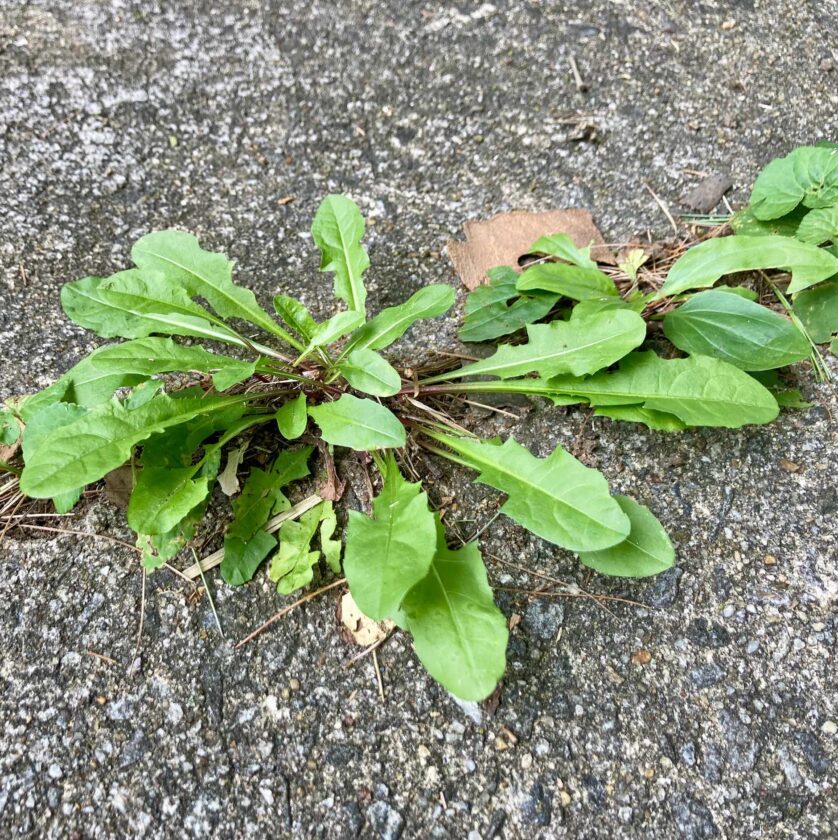
Chicory
I love to see chicory growing on the side of the road. The angular stalk and blue flowers are a dead giveaway, and this time of year chicory is along every roadside – and sometimes completely filling meadows – in my neck of the woods.
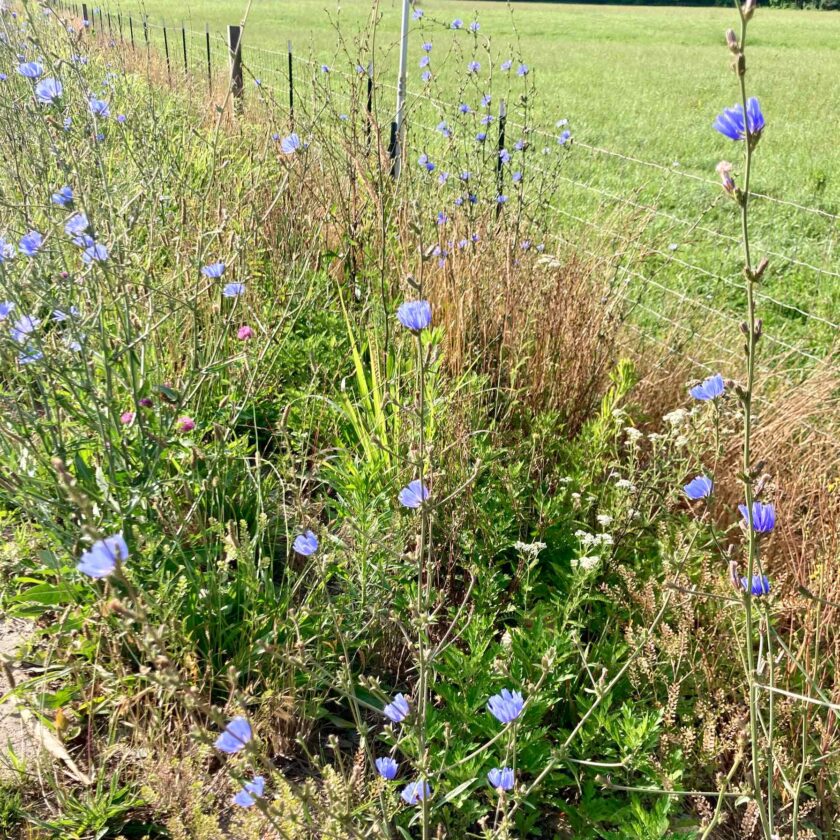
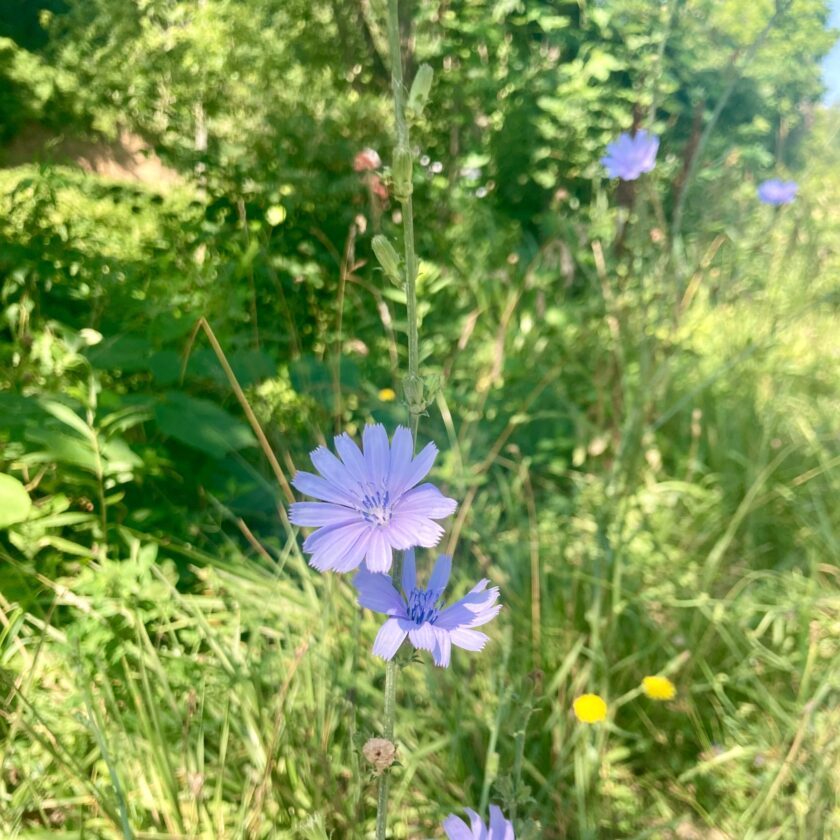
The leaves of chicory are edible. The roots are also edible, and in times past have been commonly used as a coffee substitute. In fact, “coffee and chicory” is still popular in some parts of the US – if you’ve ever been to Cafe Du Monde in New Orleans you’ve had a coffee/chicory blend.
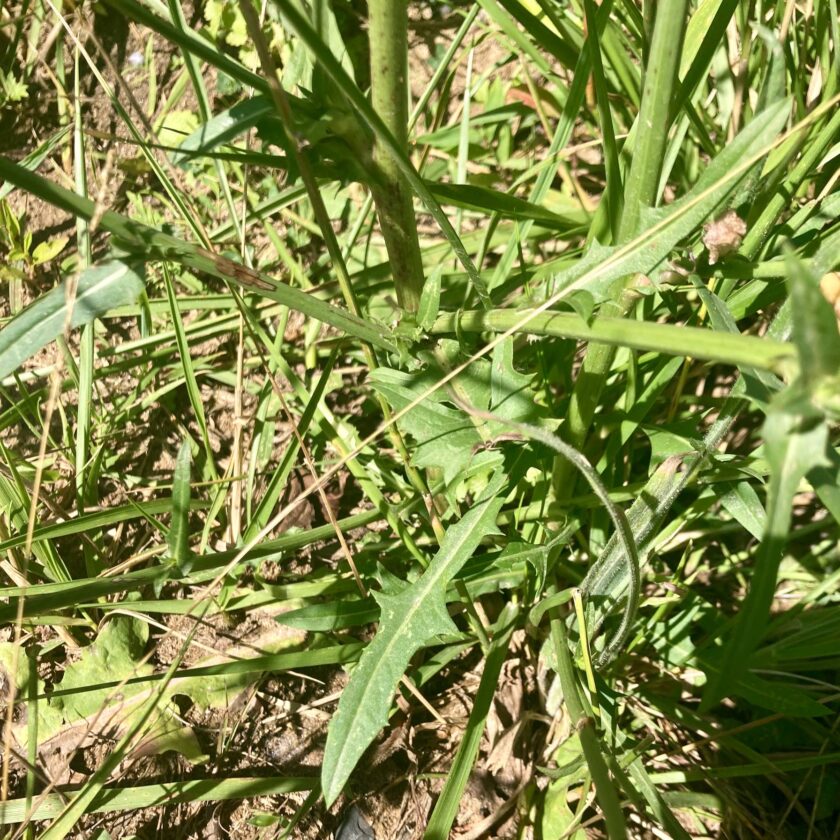
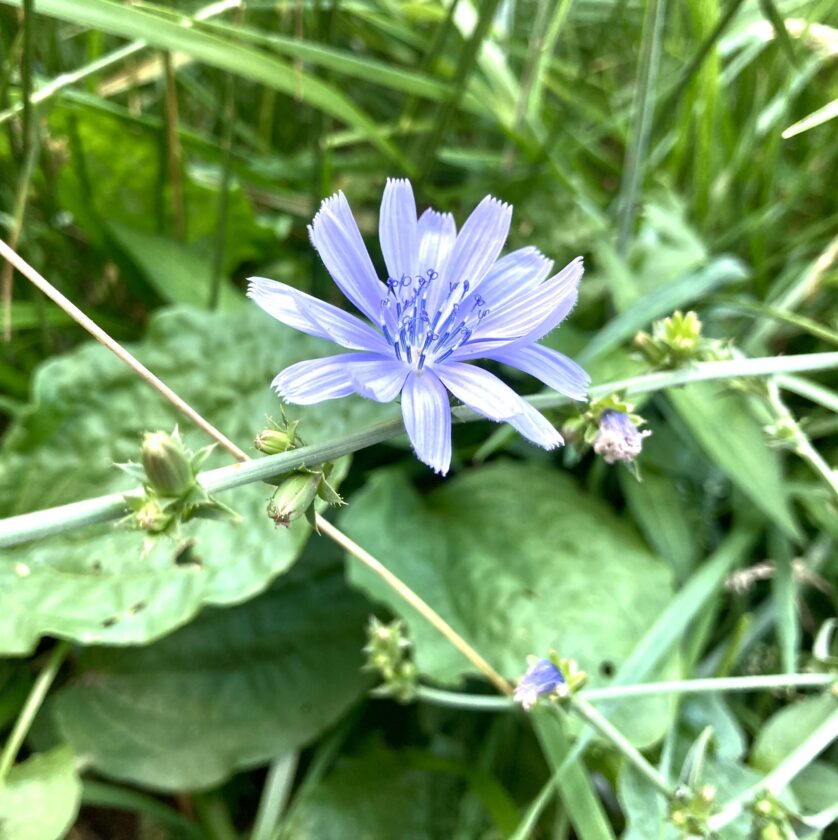
Plantain
If you read much survival literature at all you’ve probably heard about plantain (no relation to the banana-like fruit). Plantains come in two varieties, broadleaf (shown here) and lance-leaf, which is narrower and comes to a point, yet still looks very similar (I am still looking for a lance-leaf plantain – I’ll put put a photo as soon as I find one). Both plants are widely used in herbal medicine.
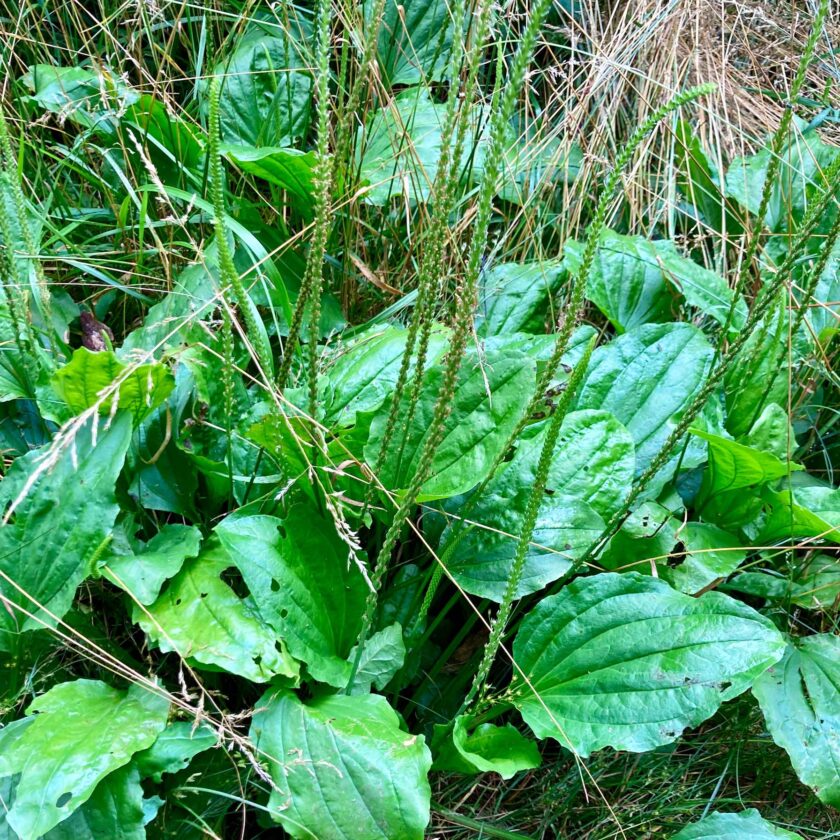
Both plants are also edible. You want to pick the smallest, youngest, most tender leaves from the center of the plant. I find these to be mostly tasteless. You can also eat the seed pods. I haven’t tried the seeds yet but they can be eaten raw. One author recommends boiling them and says they taste like baby corn.
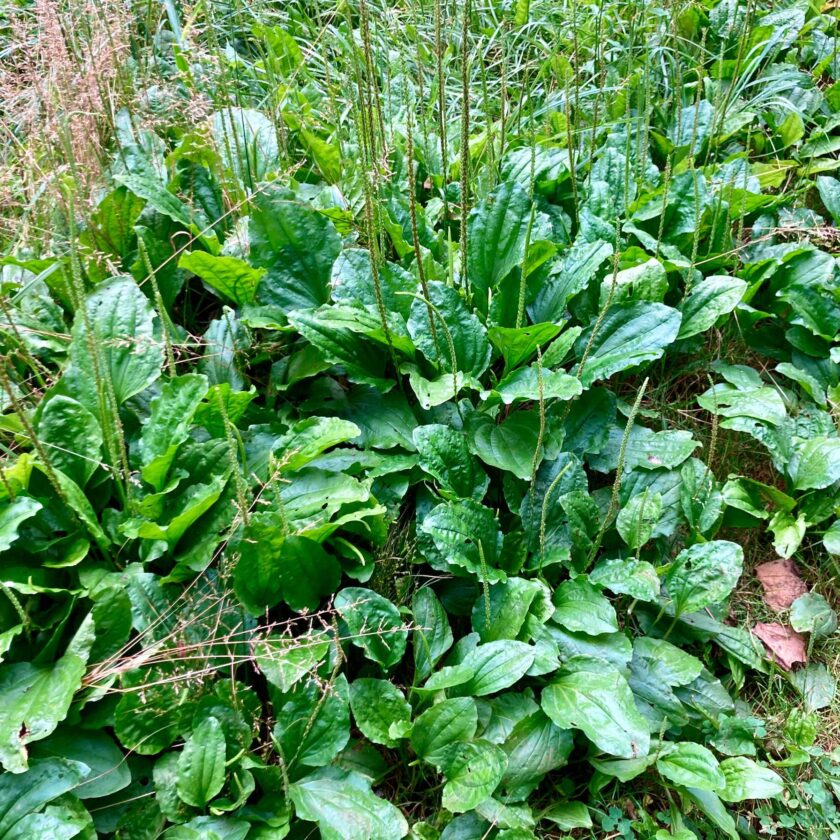
The seeds are the sole ingredient in psyllium husk, a very popular dietary supplement intended to add fiber to the diet. Greg Ellifritz also told me that same native peoples believed that eating a few seeds a day was an effective insect repellent.
Wood Sorrel
A lot of folks of my age have probably eat wood sorrel as kids. It’s little heart-shaped leaves are tart and sour. Lately I have found these to be even more sour than I remember – maybe because it is late in the season.
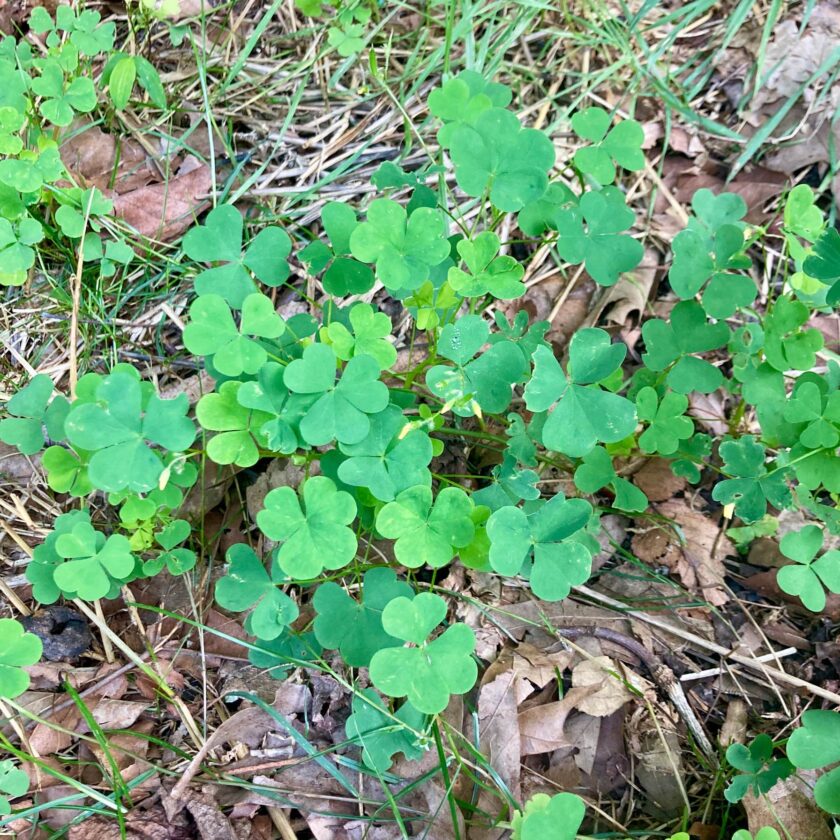
Wood sorrel is pretty prolific in damp, shady areas. In fact, you can see wood sorrel in the background of some of my other photos, as well.
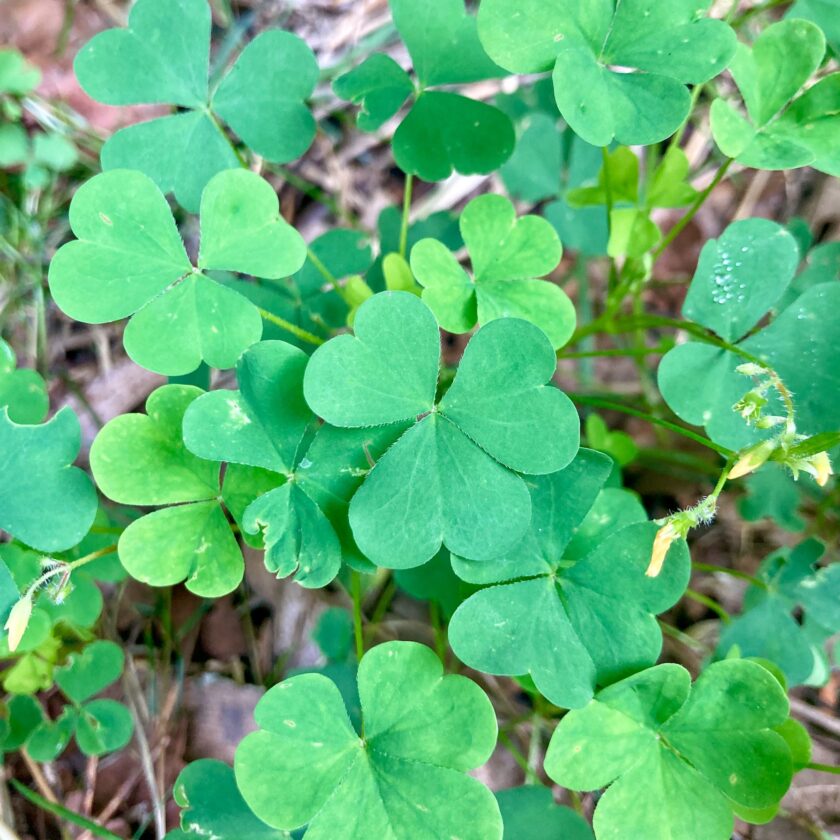
Wood sorrel is tart because it contains oxalic acid. Eating small quantities of this stuff will be fine for most folks. You may want to avoid it if you have kidney problems, however. You will also want to avoid eating large quantities on a daily basis because it can cause kidney problems.
Red (and White) Clover
The leaves and flowers of red and white clover are edible. These plants are prolific in meadows and other grassy areas. White clover is likely prolific in your yard unless you are an avid lawn-maintainer. I’m really surprised at how many of these “weeds” are edible, and how hardy they are.
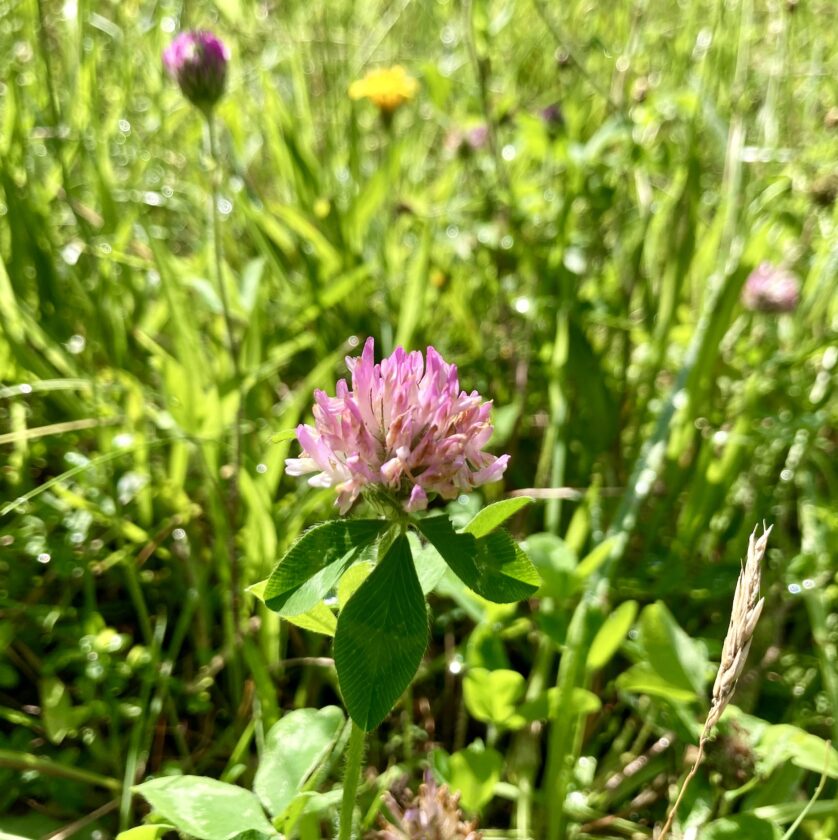
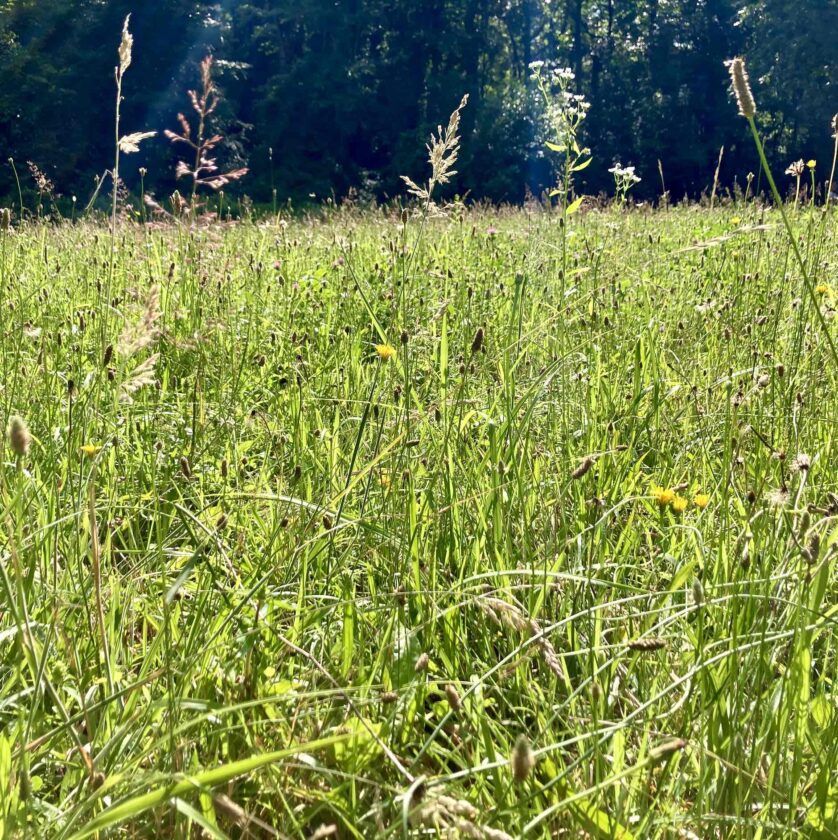
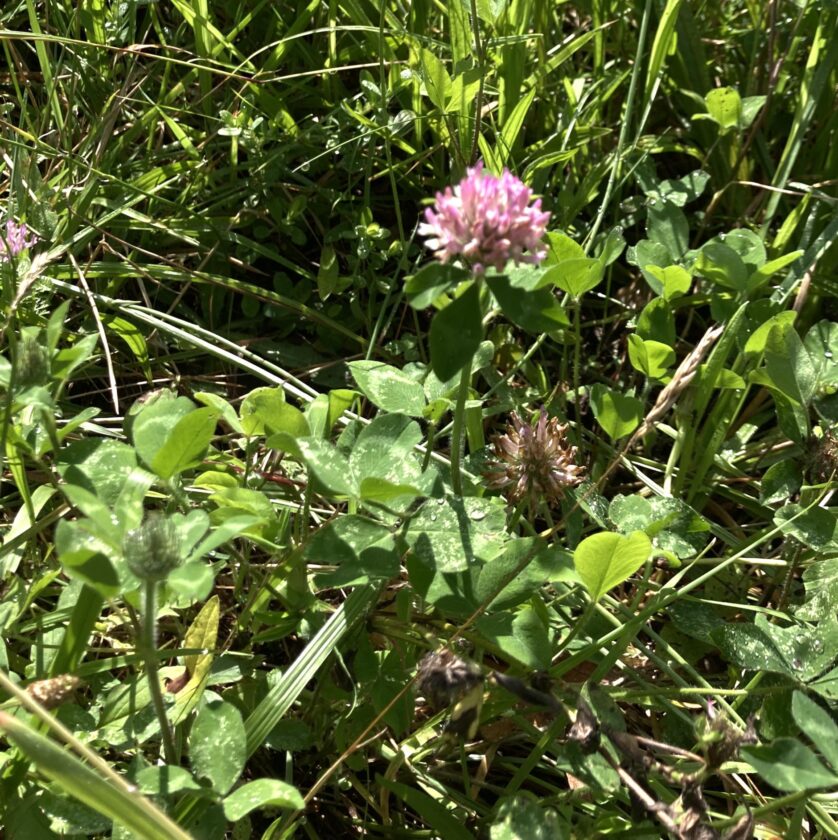
Creeping Charlie
This plant is definitely considered a weed by man. Creeping Charlie grows prolifically if left unchecked. In fact, if you Google “creeping Charlie” you’ll mostly get results on how rid your lawn of it. My yard and garden are full of creeping Charlie and I’m happy to let it go, along with dandelions and plantains.
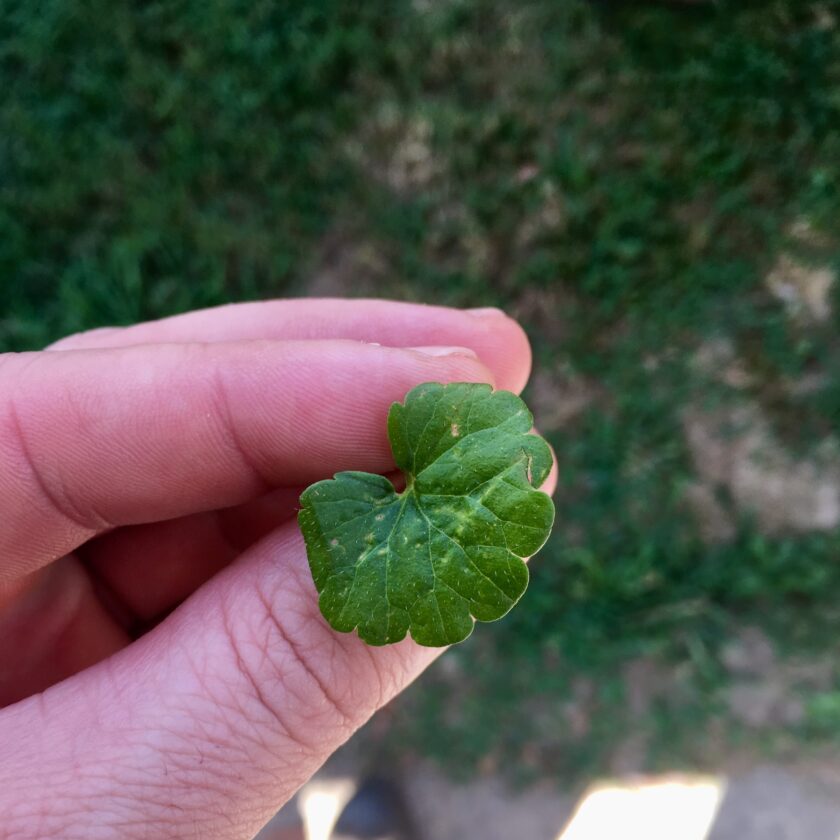
Creeping Charlie is a relative of mint and has a slightly minty flavor. It is also sometimes called “ground ivy” for the way it covers bare ground.
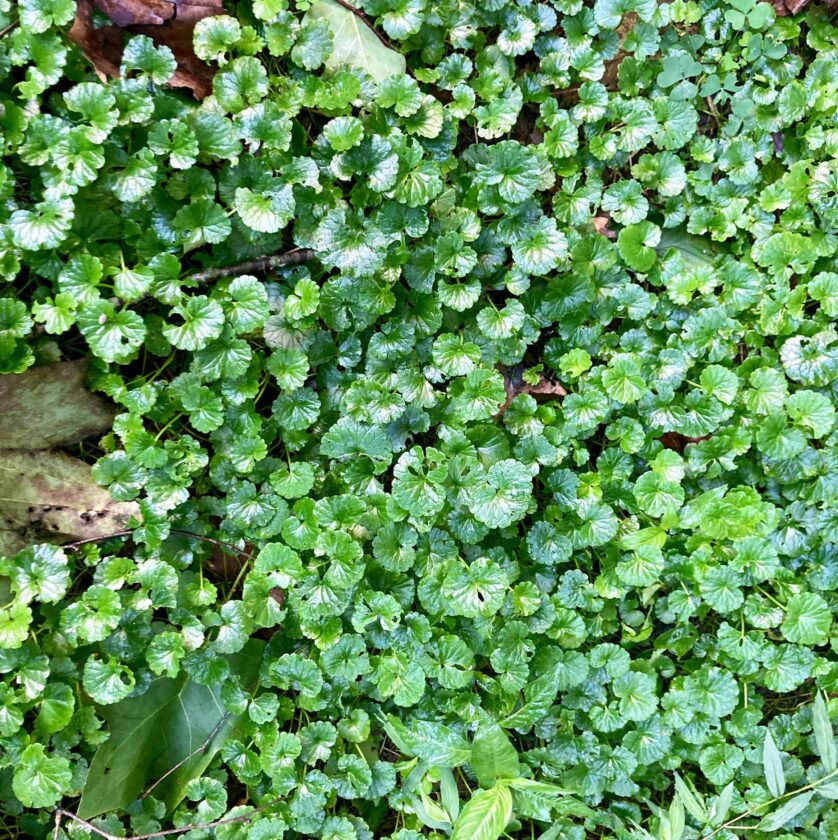
Purslane
Purslane is another “weed.” This plant has an almost succulent look to it, with thick, waxy leaves and stems. It grows low to the ground and the specimen here was found in my driveway. Purslane is an incredibly nutritious plant that contains a ton of Vitamin A and other antioxidants, potassium, calcium, magnesium, and is protective against many forms of cancer (per the NIH – not just some herbalist).
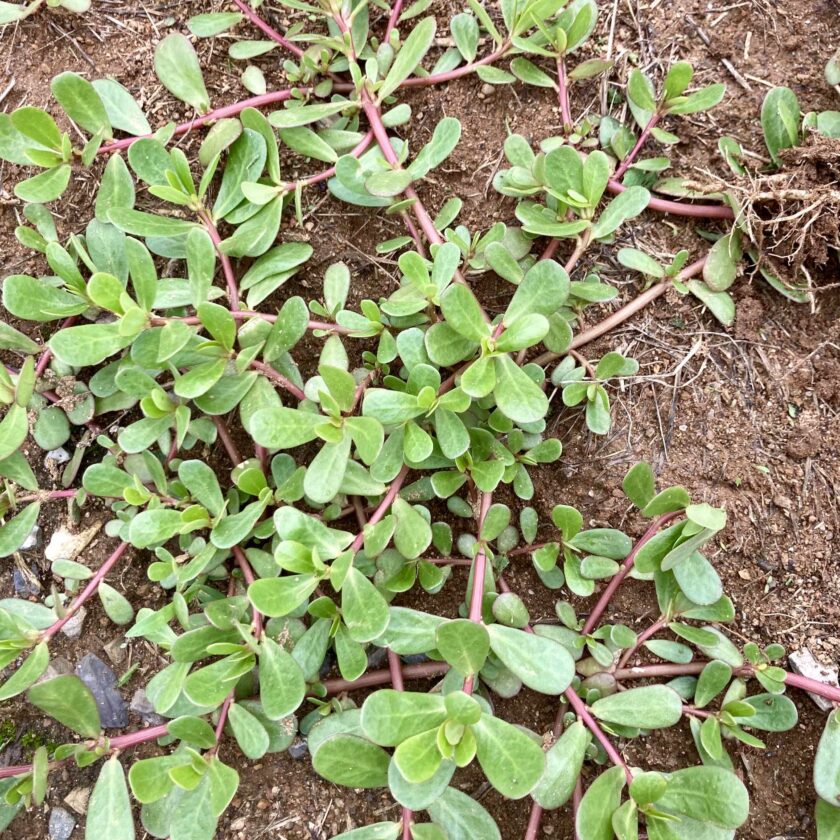
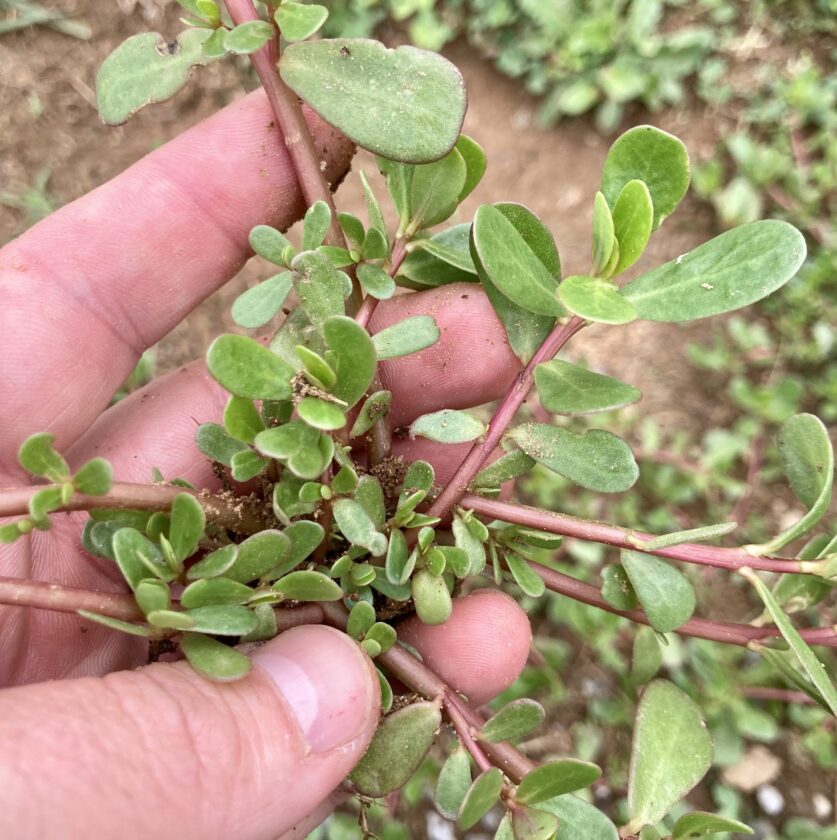
Edible Roots/Tubers
The roots of some plants are edible. Some, like cattails, can yield quite a bit of starch. Others, like ramps, are best used in smaller quantities.
Ramps (Wild Leeks)
Ramps are a delicacy of the Southern Appalachians. I had heard of these as a youngster but never seen them. Now I have a patch of them growing on my property. Ramp are prized for their flavor and not necessarily for their bulk. They taste like a garlicky onion. Which is to say, they are delicious but not something you’re going to get 2,000 calories/day out of.
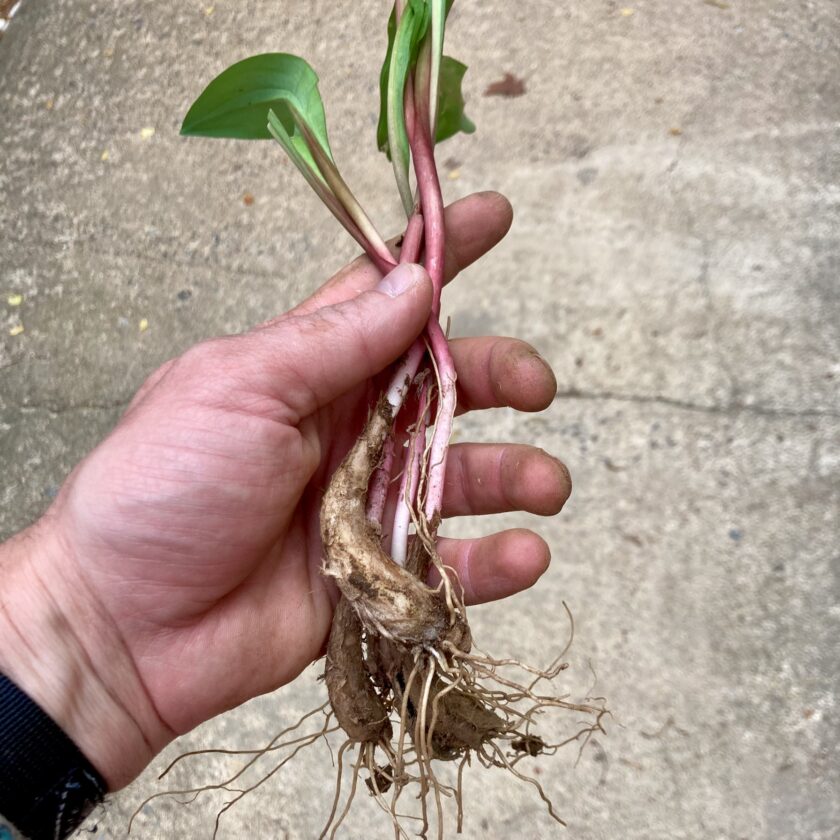
All parts of the ramp plant are edible. Ramps are only “in season” for a couple weeks, usually in April or May. As a result they are impossible to find for the rest of the year.
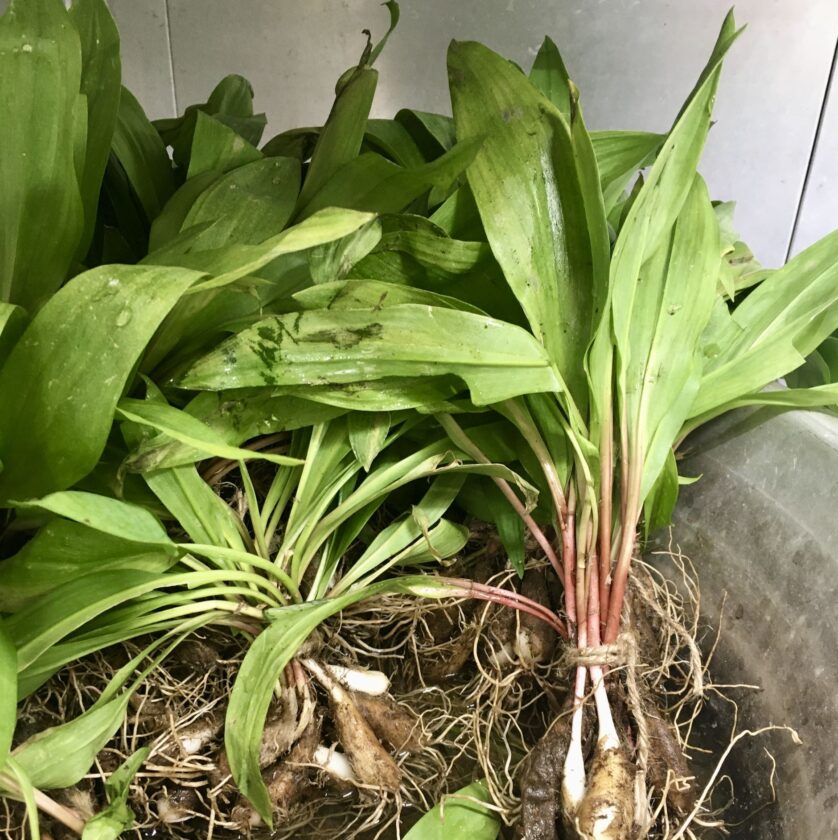
Berries
If you’re lucky enough to be in a survival situation in mid- to late-summer you should be able to find a few berries. Quite a few varieties of berries grow in the Southern Appalachians. Most look just like the versions you buy at the grocery store but are a little smaller. They are almost guaranteed to taste way better than the store-bought versions.
Blackberries
The quintessential berry bramble, blackberries are well-protected by sharp thorns. Blackberry brambles grow just about everywhere. You’ll often find them in clearings and along the edges of roads. Blackberries are one of the most recognizable wild edibles of the Southern Appalachians.
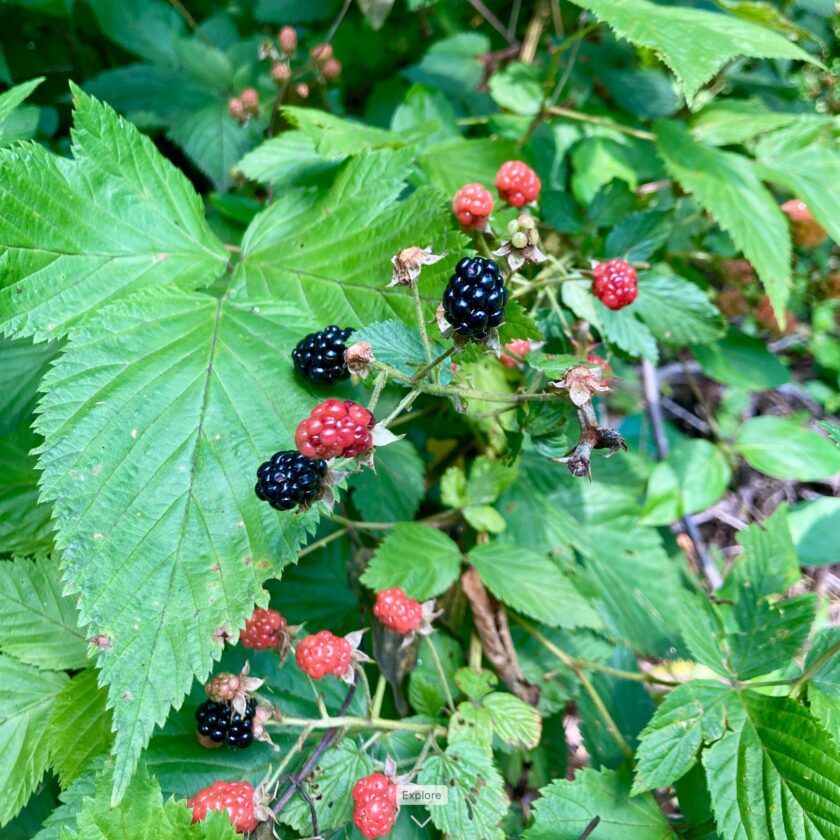
Blackberries grow wild on my property…but just barely. I have one or two plants. They do grow all up and down my road, though, which is where these photos were taken.
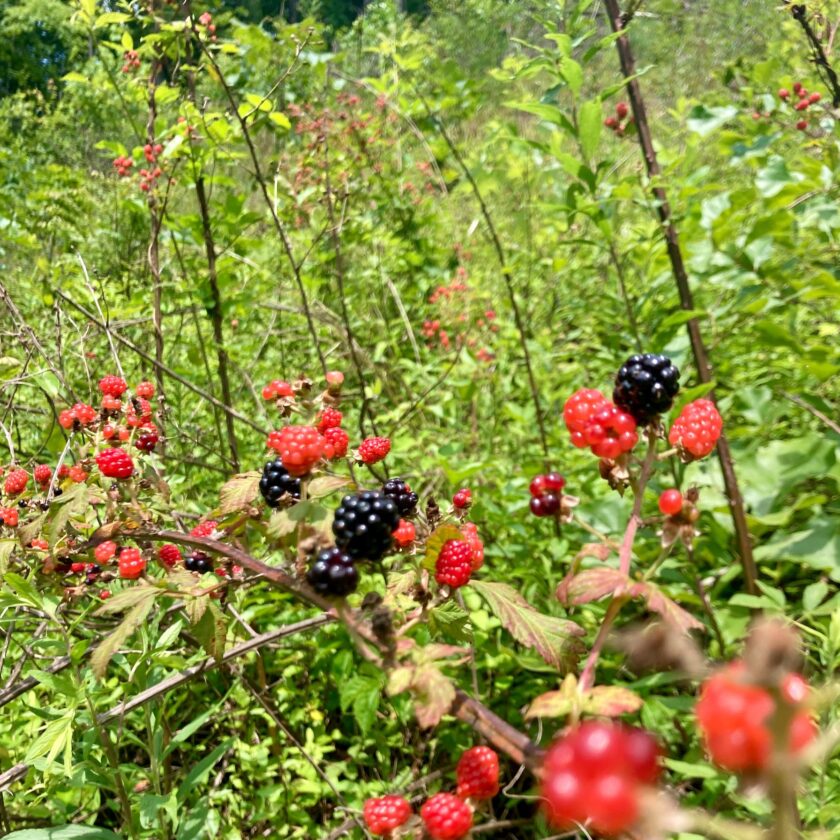
Black Raspberries
Black raspberries are truly one of summer’s biggest treats. These come in fairly early – late June or early July – where I live, at almost exactly 3,000′ of elevation.
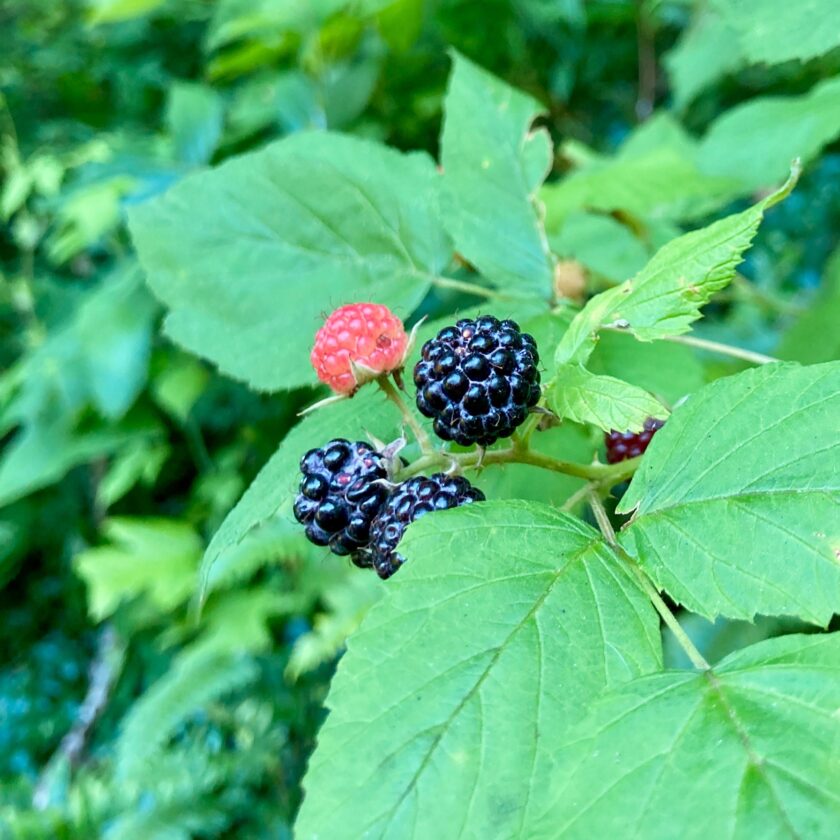
I feel insanely lucky to have these growing wild, literally right outside my back door. Really ripe ones should fall off easily into your hand. You will have quite a bit of competition from birds to get these.
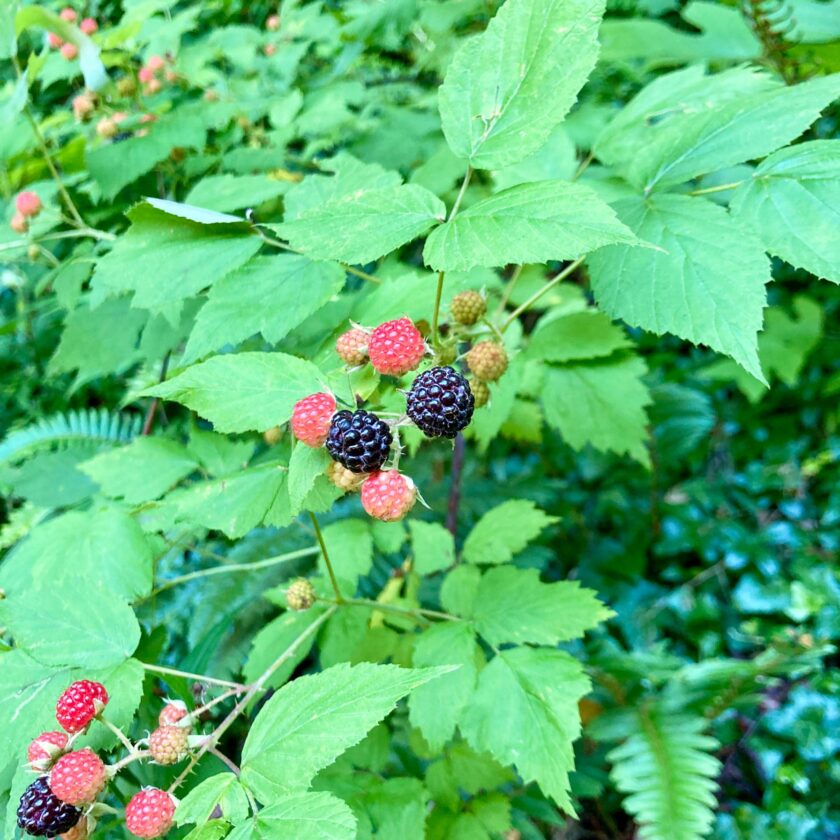
Blueberries
Unfortunately I do not have wild blueberries growing on my property. We planted several blueberry bushes and are starting to get berries, but there’s just something about the wild ones – they are so incredibly good. The photos here were taken on a hike just a few miles from my house.
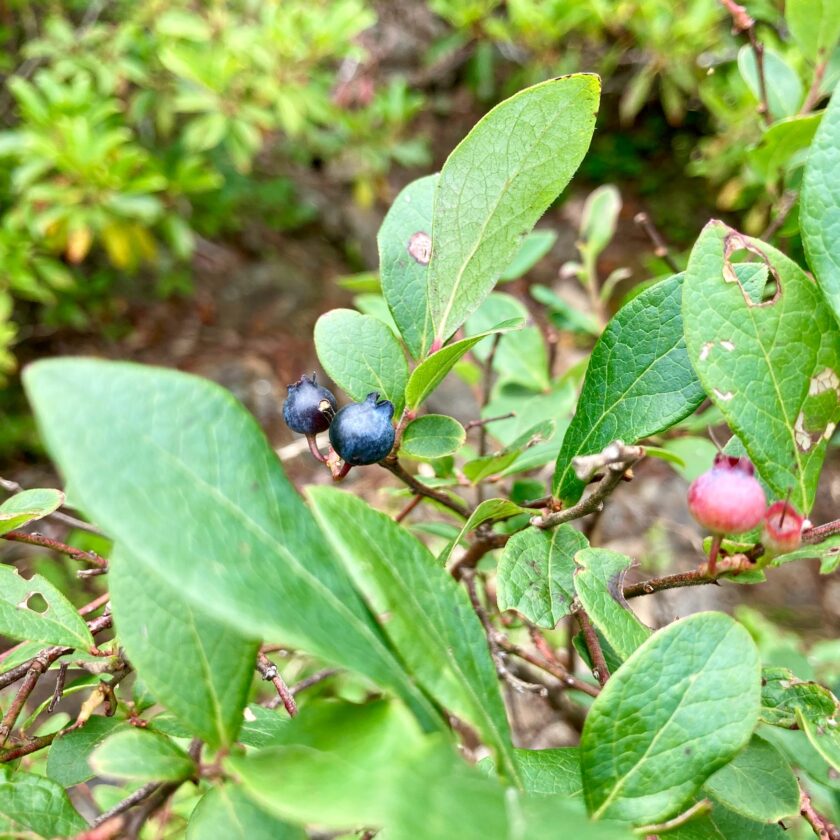
Blueberries ripen in early fall – late July and early August. They are absolutely delicious. Unfortunately bears like them, too, so keep your eye out if you find a big blueberry patch. On this particular hike you can pick and eat all the berries you like along your walk.
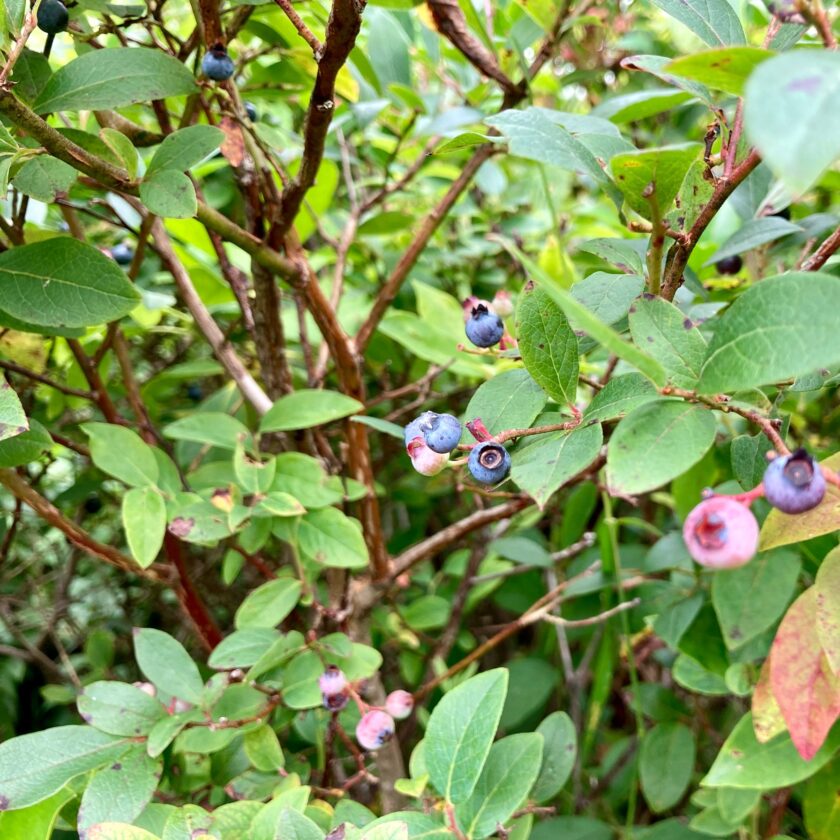
Use caution when picking/eating blueberries. There are a lot of blue-colored berries in the woods that look similar, so make double- and triple-sure you know what you’re picking before eating it.
Black Huckleberry
This is a brand new one for me! In my childhood (where most of my knowledge of wild edibles of the southern Appalachians originates) wild blueberries were called huckleberries. I a little research and I discovered they were a separate berry entirely.
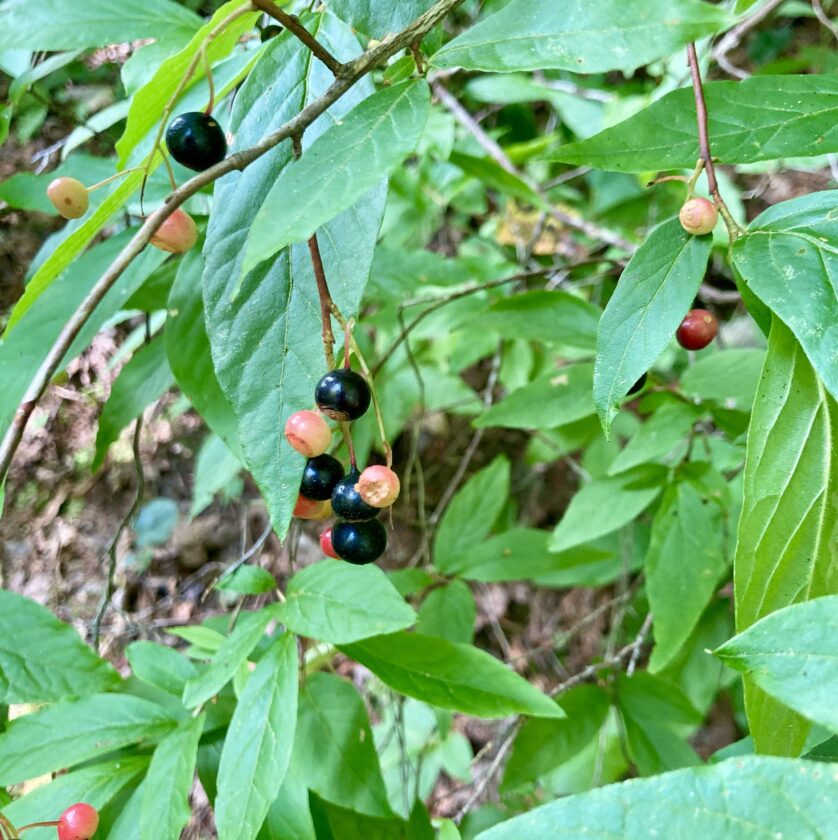
I have seen these a number of times on a popular trail I hike but didn’t know what they were. Thanks to Greg Ellifritz for identifying these for me. Now that I’ve seen these and identified them I’m seeing them everywhere.
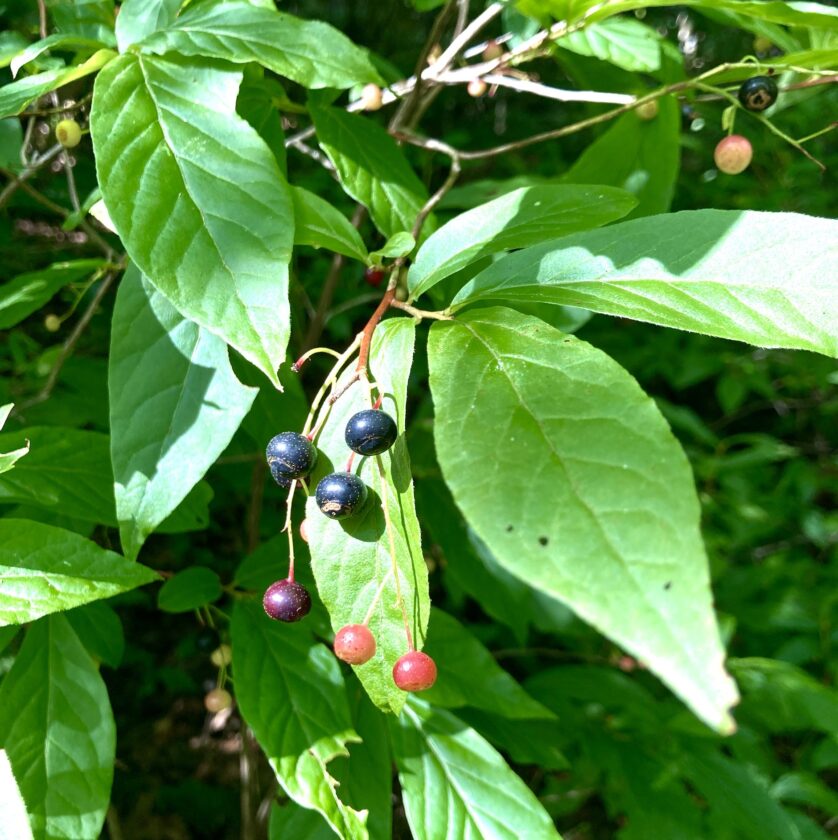
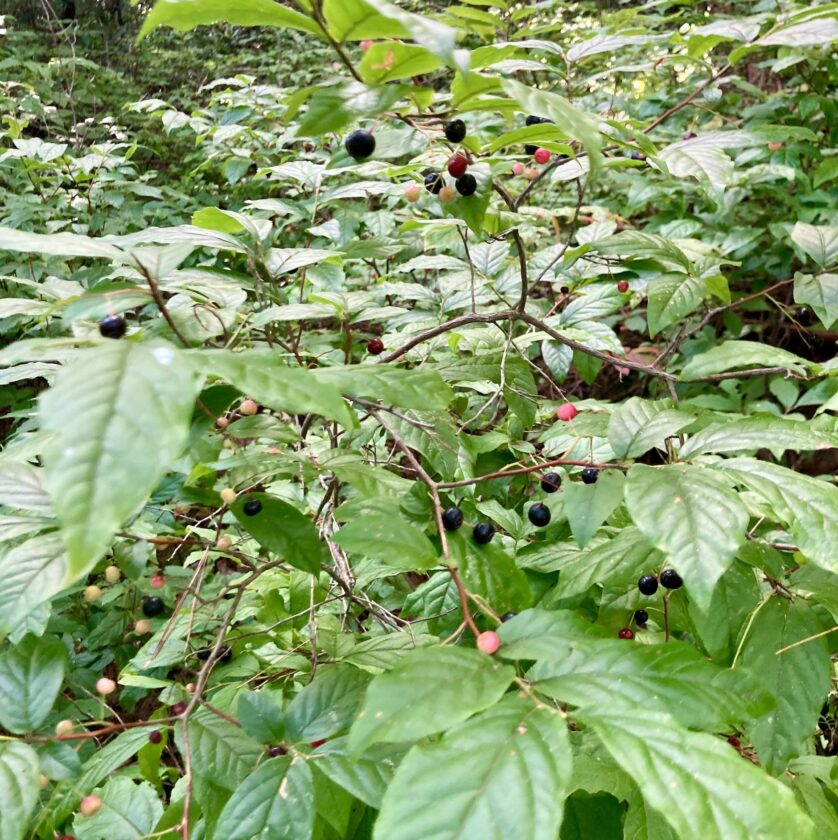
Elderberries
Elderberries grow on fast-growing trees. We have elderberries in the yard that we transplanted form a neighbor a couple years ago. From a 2′ stalk to a bushy tree 10 or more feet high in just a couple years, these provide good shade to the chicken coop…and elderberries.
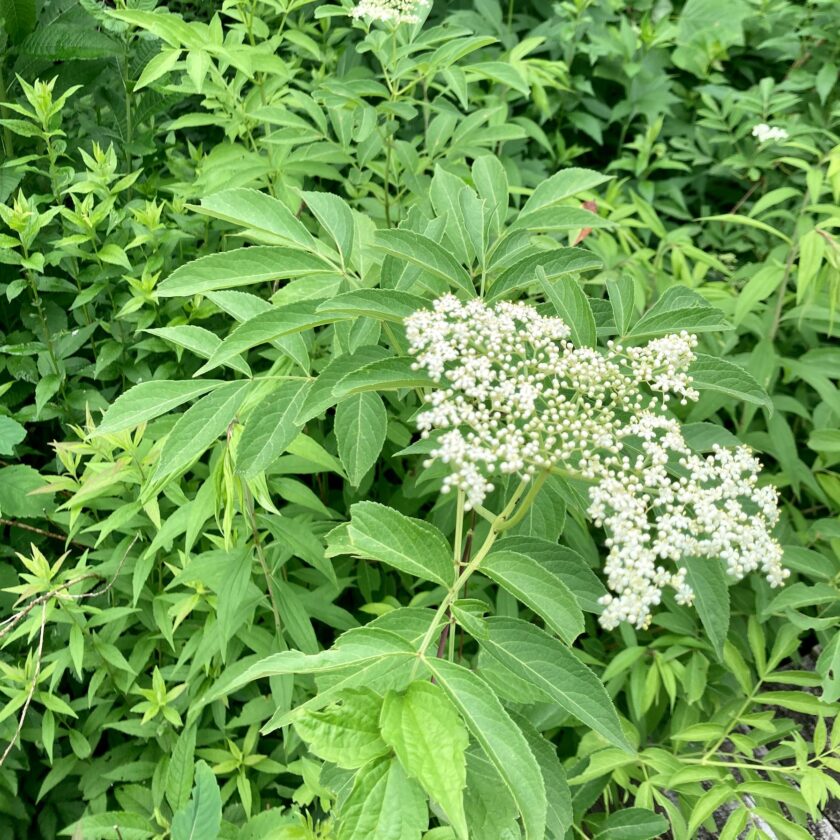
The flowers are edible as well as the berries. You should avoid eating any other part of the plant, however, including the seeds.
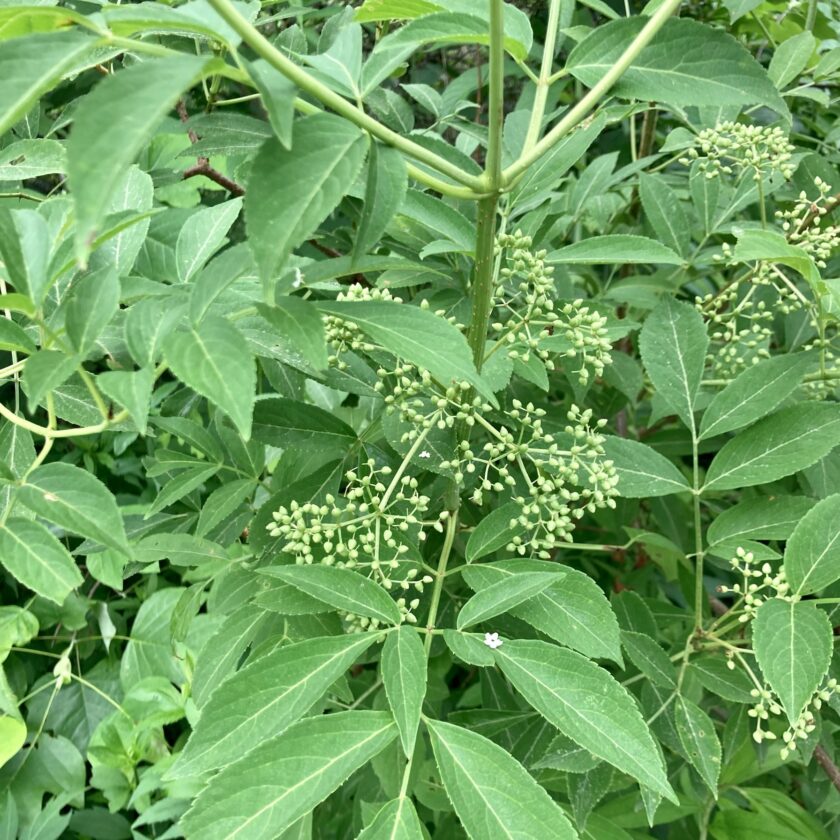
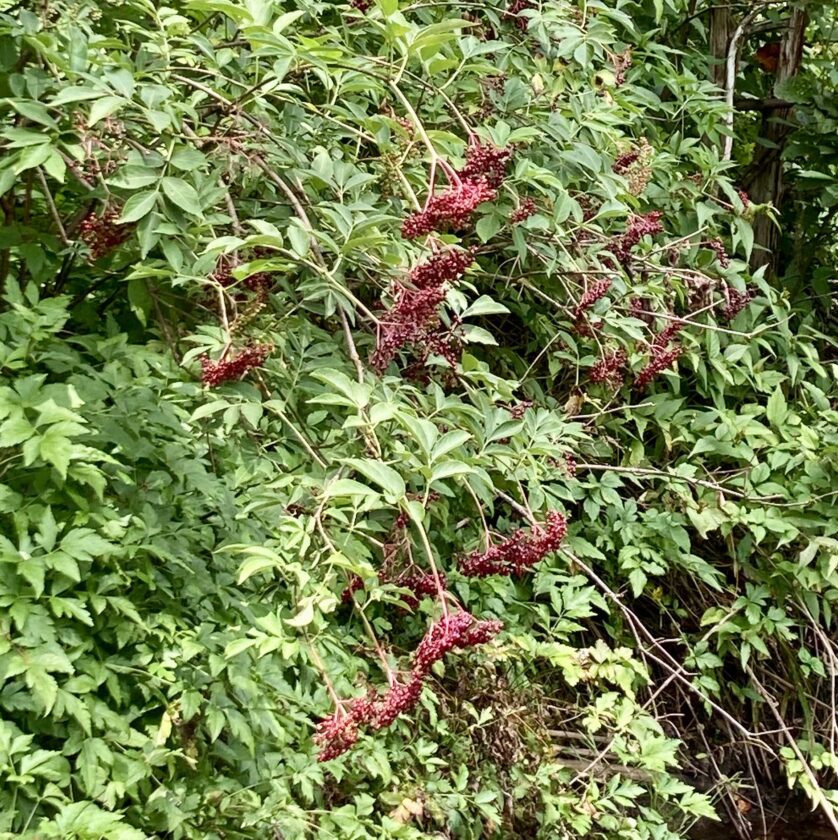
Wild Grapes
Grapes grow wild in the southern Appalachians – either muscadines or fox grapes. The skins of muscadines are very tough. We had muscadines where I grew up and I learned to pop them into my mouth and squeeze the inner fruit from the thick outer skin. In a survival situation I’m sure I would eat the skin, as well.
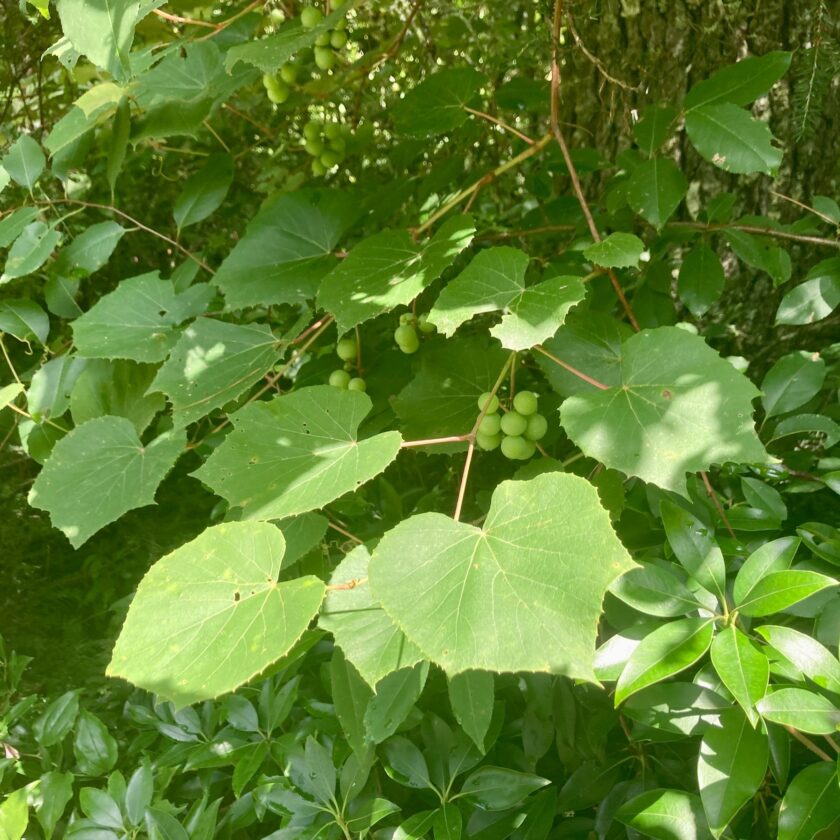
I found these along a really popular hiking trail near my home. I hope they are still there when they ripen in a few weeks.
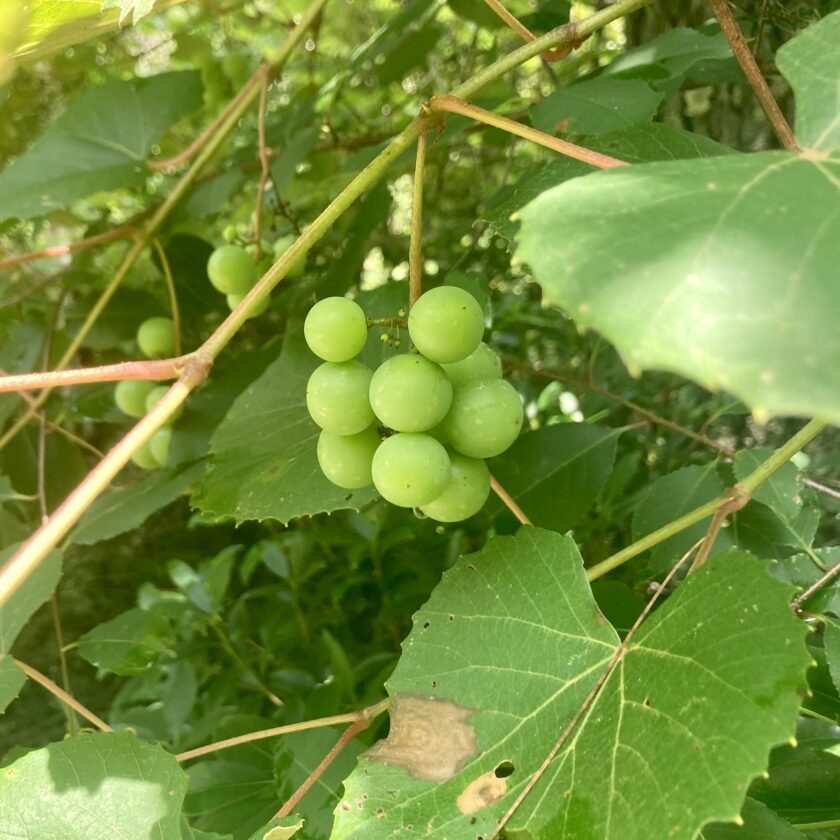
Use extreme caution before eating any wild grapes. There are several poisonous look-alikes, including the moonseed berry.
Wine Berries
Wine berries are an Asian variant of raspberries introduced to the US in 1890. These berries are extremely prolific around my property. They are everywhere. The first summer we lived her we probably picked five pounds and made several jars of jelly.
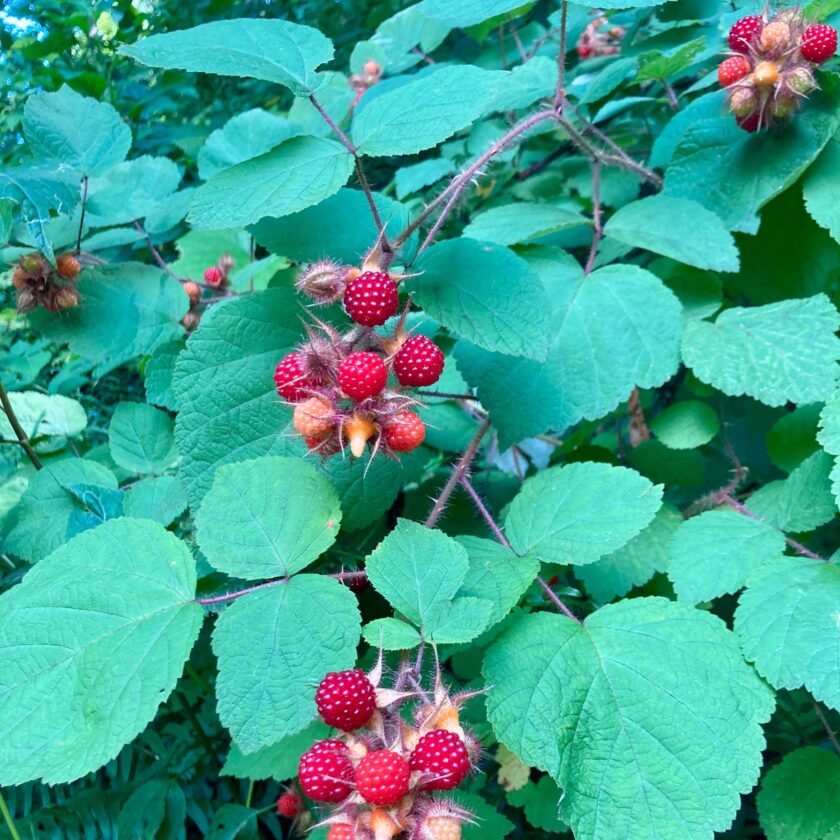
I’ve found that birds will get a lot of these berries (or just about any berry) before you can get to them. If you find a berry bush in season, look for bunches of berries low on the bush and hidden behind leaves. Birds will sometimes neglect these berries because they are harder to get to.
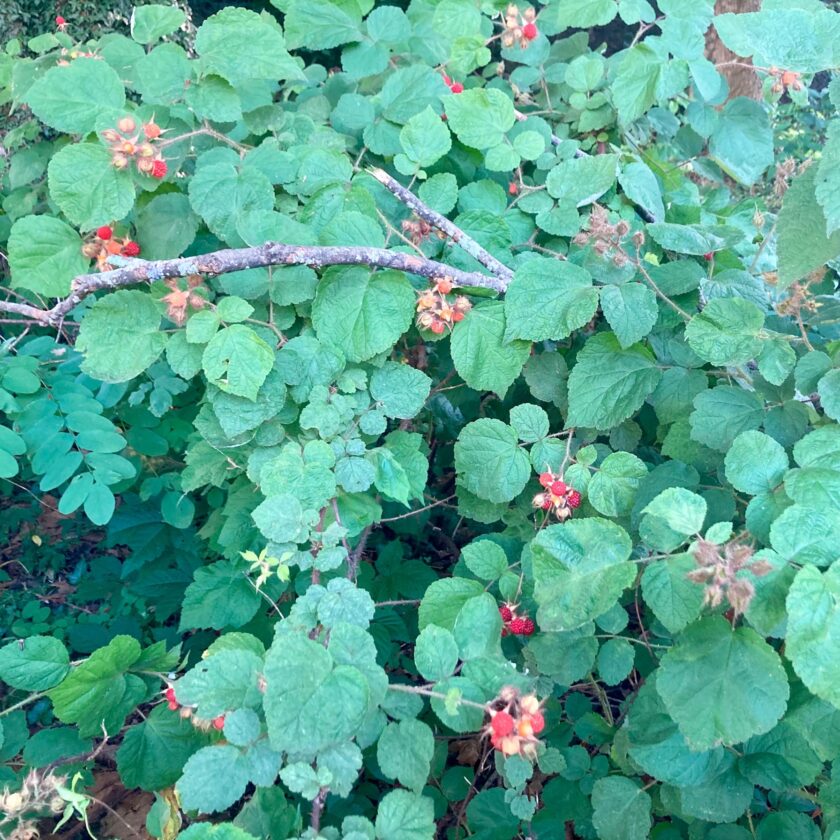
Wine berries are slightly more tart than raspberries and have bigger seeds. They are still really tasty, though. I enjoy picking them and eating them right off the vine.
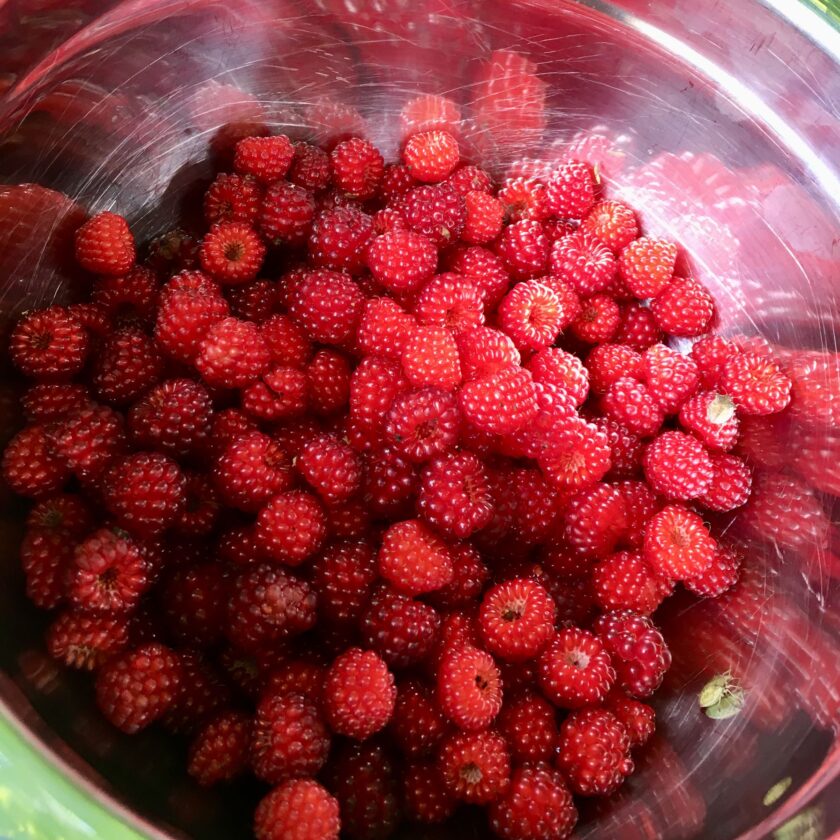
Staghorn Sumac
I ate plenty of Staghorn Sumac berries as a kid. These things were really prolific. They have a really tart flavor and are frequently recommended in a “lemonade” recipe, made by soaking the berries in cold water for a few hours. Recently I tried it and it’s pretty good; you probably get a lot of the nutrition of the berry without having to deal with all the seeds therein.
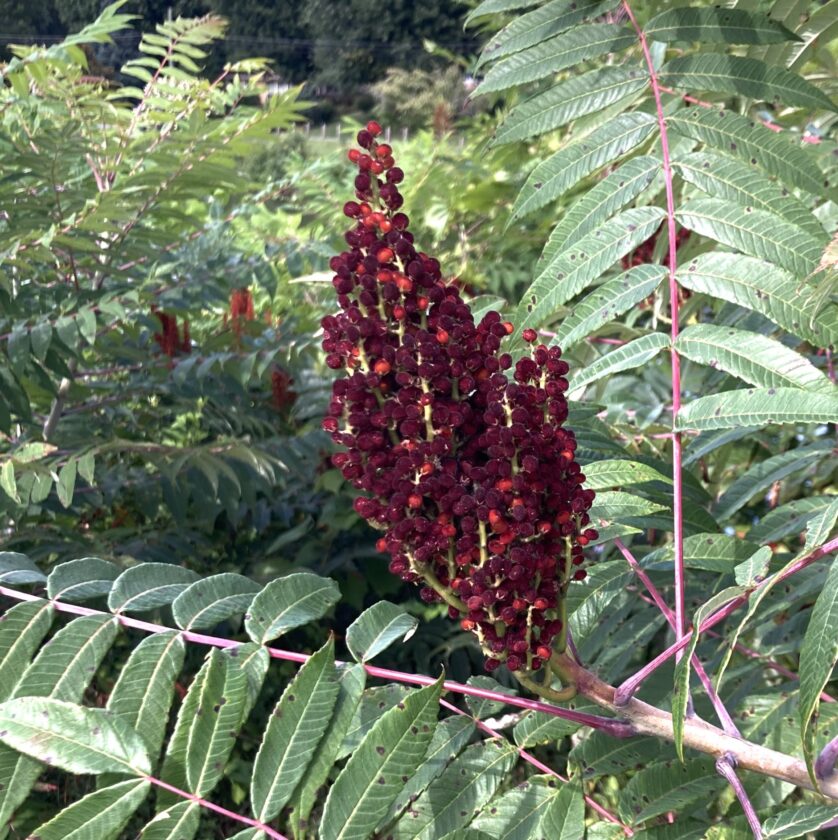
These velvety berries generally hang on for a while into the late fall/early winter. These are not the same thing as poison sumac. Poison sumac has white berries, not red. Additionally these generally grow on dry ground while poison sumac prefers wet, swampy areas.
Edible Nuts
I don’t typically think of nuts when I think of survival foraging, but there are a few that grow here.
American Chestnuts
I have an American Chestnut tree in my front yard. During late summer and early fall it deposits sharp, spiny seed pods all over my deck and front yard. If you find a chestnut tree you need to find nuts that have fallen. When the spiny cases turn brown and open up you can collect the nuts.
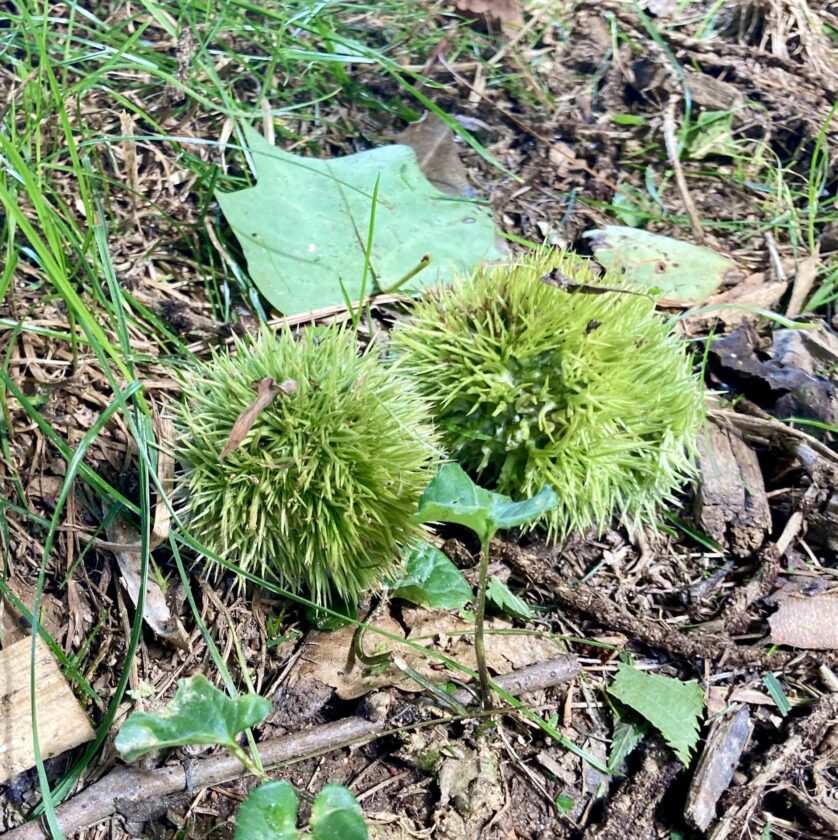
If you eat a chestnut be sure it is an American Chestnut and not a horse chestnut, which are poisonous. Horse chestnuts are not native to North America but my understanding is that they have been transplanted here as a decorative plant, so you may encounter them. The shells of the two nuts are petty easy to tell apart.
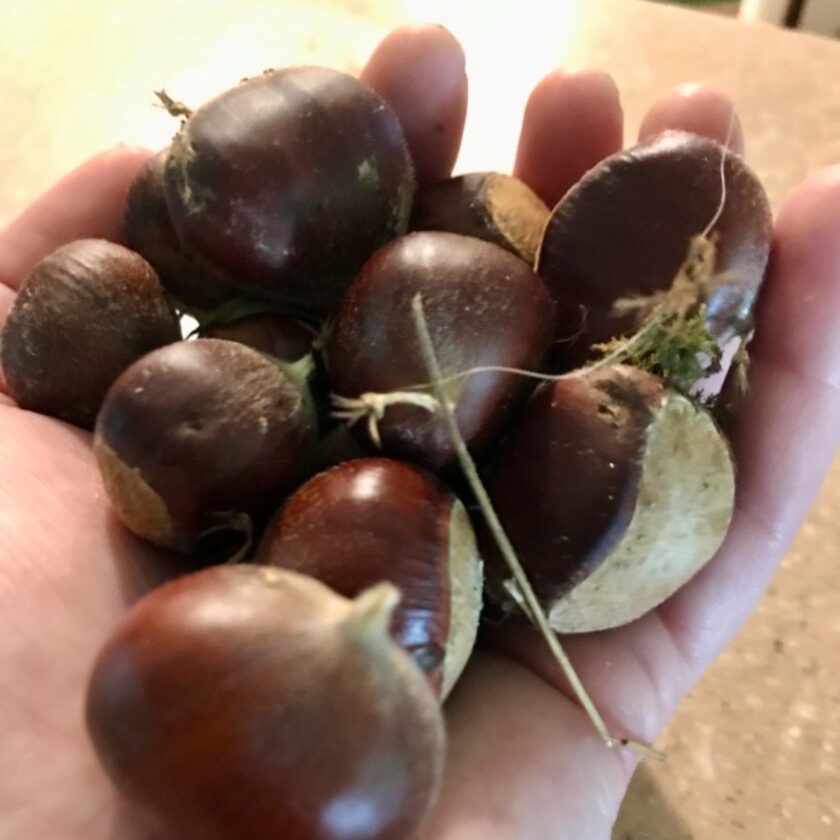
You may want to soak chestnuts in water for a few minutes before cooking. We did this and found quite a few worms were inside the nuts. The water soak got rid of them. Chestnuts should be cooked before being eaten. They are very high in starch but to be honest I don’t really care for them – I would truly have to be hungry to eat these again.
Black Walnuts
Black walnuts come in thick, fibrous, green cases. These cases will stain your hands and clothes, and about anything else. Once the nuts fall the fall, get the cases off, then you have to crack the nuts. The shells are quite hard but you can do it. The nutmeat is excellent.
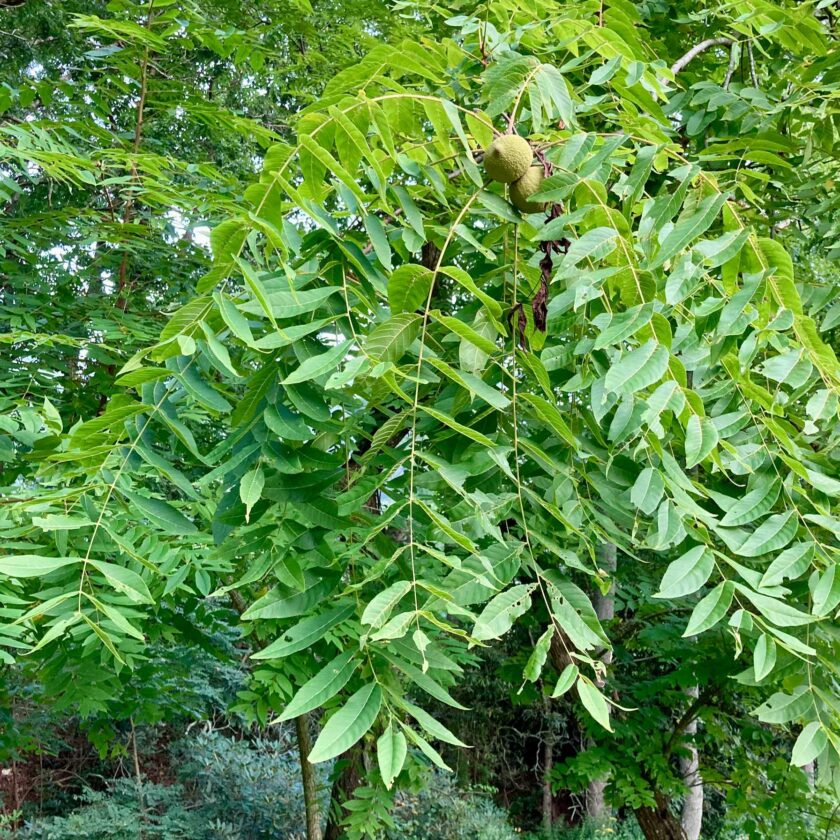
This tree is on my property. Not much grows beneath it because Black Walnut trees release a pesticide that inhibits the growth of competing plants.
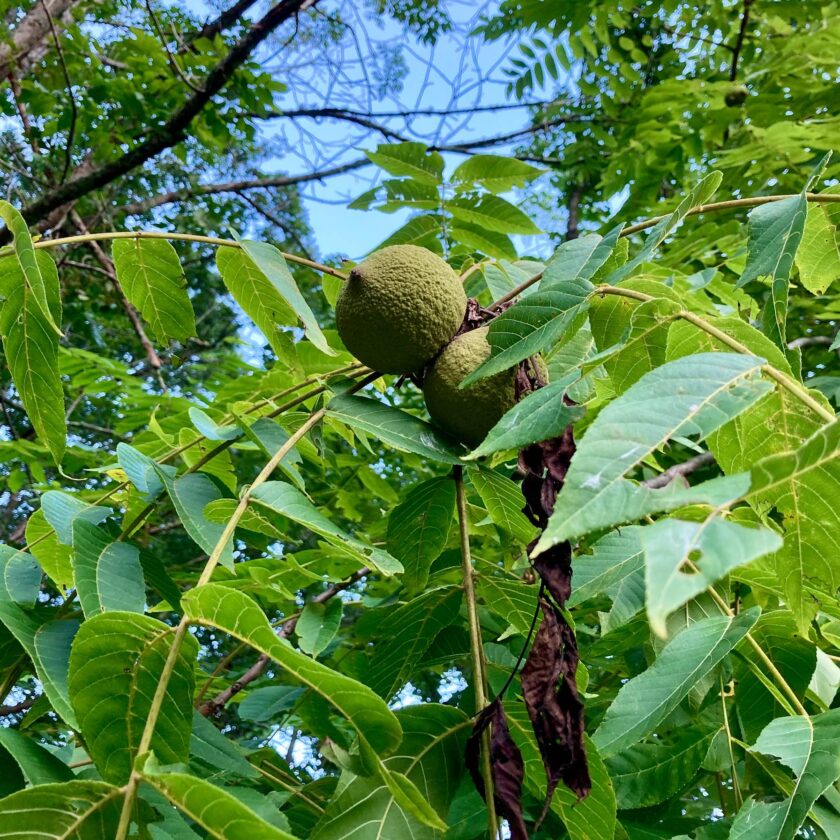
When fall rolls around I will try to get some pictures of the actual nuts of a black walnut.
Fruits
There aren’t a ton of fruit trees that I know of growing wild in the Appalachians, but there are a few. For now I only have the paw paw tree, but there’s one more I have in mind, but haven’t found yet. Stay tuned.
Paw Paw
Paw paws are a really not-well-known fruit. Apparently they grow all over the Appalachians, but I’ve never seen one until this summer. The ones near me aren’t ripe yet, but I really, really hope to taste a ripe one. They are reported to taste something like a banana.
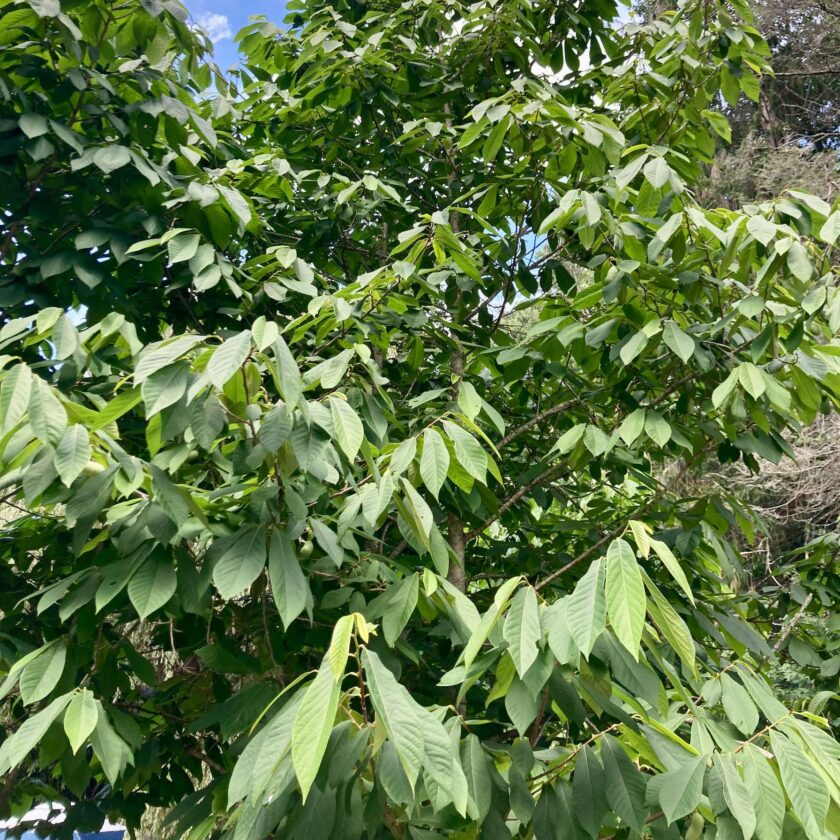
Not all trees bear fruit every year. If you do find a tree in the fall the best bet is to look carefully under it for fallen fruit.
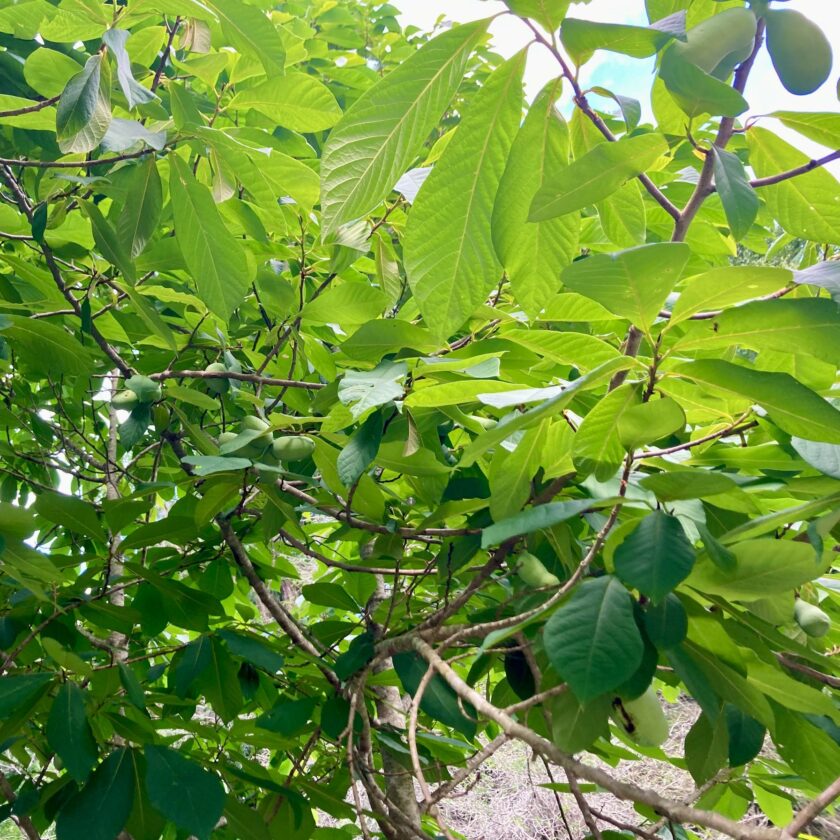
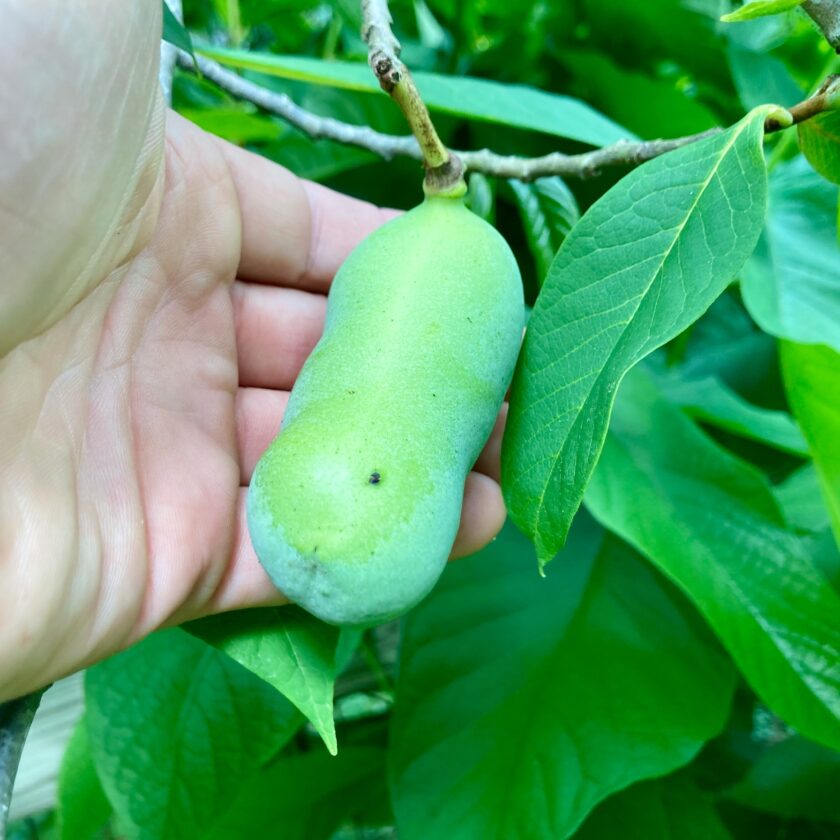
Persismmon
American Persimmons are one of the true wild fruit trees growing in the Appalachians. I grew up eating these as a fall treat during my childhood, with a large persimmon tree dropping fruit right across the road from my grandparents’ house. This is one of the truly delicious wild edibles of the Southern Appalachians.
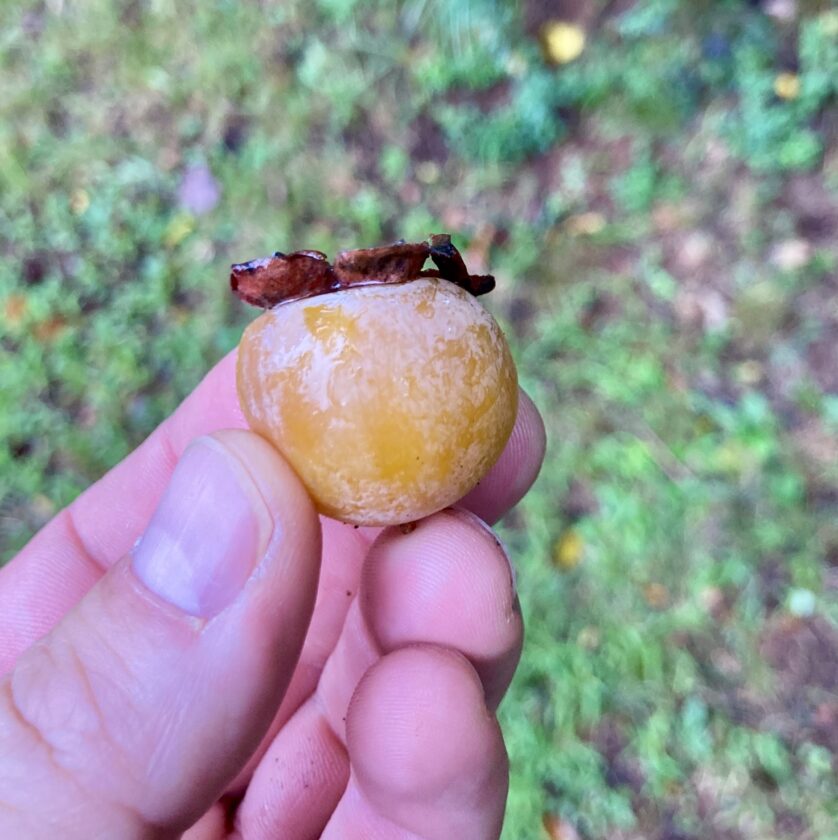
DO NOT, however, pick green fruit off the tree to eat! They are extremely bitter/astringent. Generally the best persimmons are the ripe, orange fruit that fall to the ground. Some will ripen on the tree, just look for ripe, soft ones.
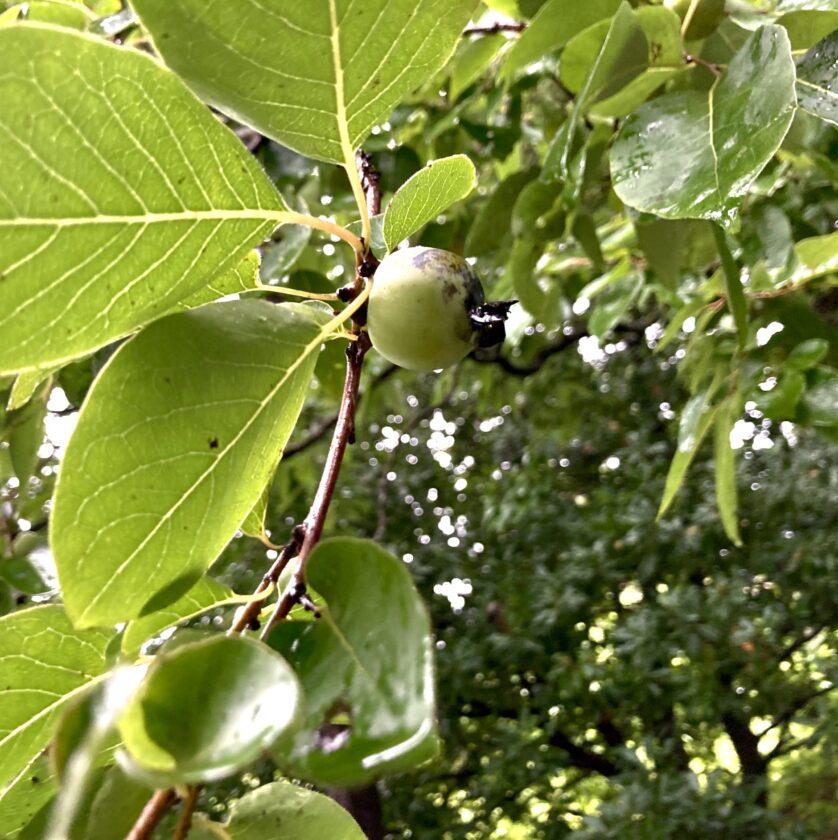
The inside of the ripe fruit is soft and somewhat mushy. This might turn some off but I think it’s quite good. And a persimmon tree can yield quite a bit of fruit. Generally fruit begin to ripen in early September through late October.
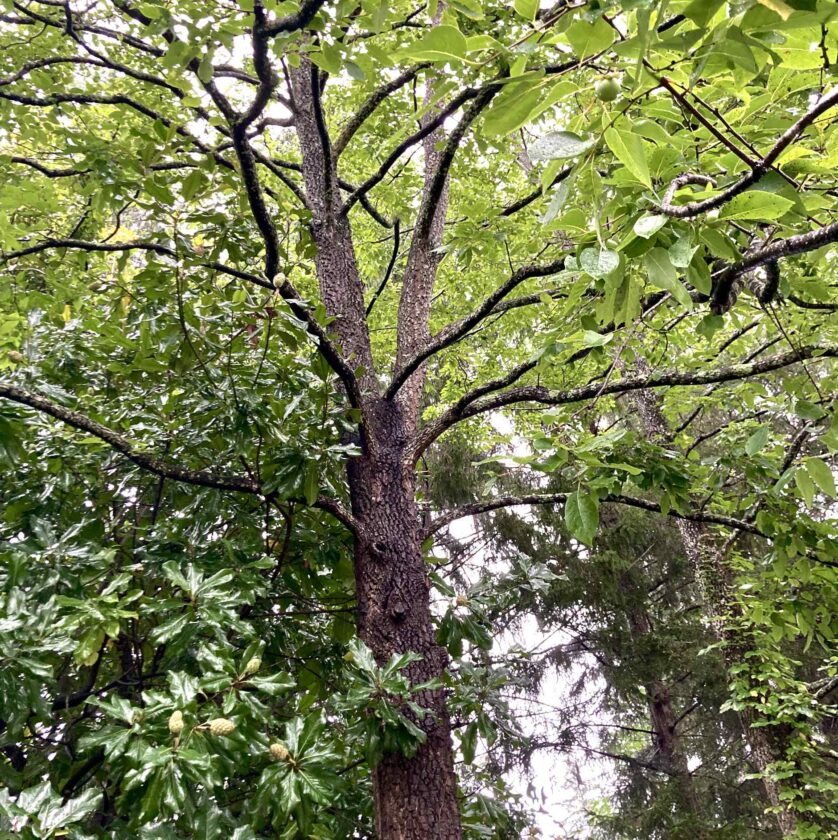
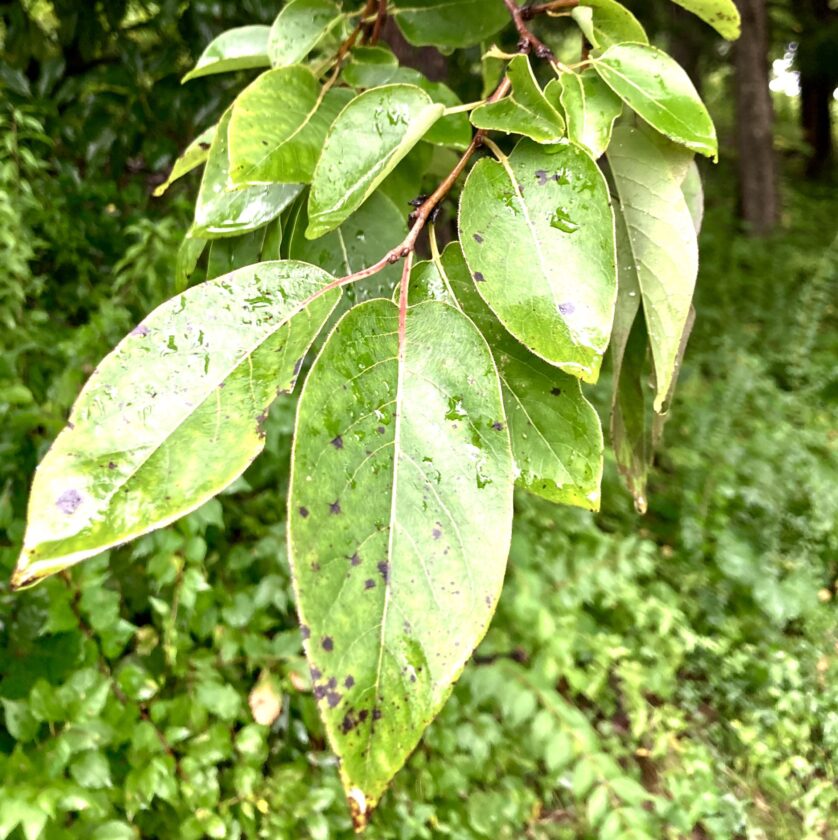
Tree Bark & Roots
Sassafras
Sassafras was one of the first trees I learned to identify as a kid, for two reasons. First, the roots smell like root beer and make a delicious tea. I drank quite a bit of sassafras tea camping out as a kid.
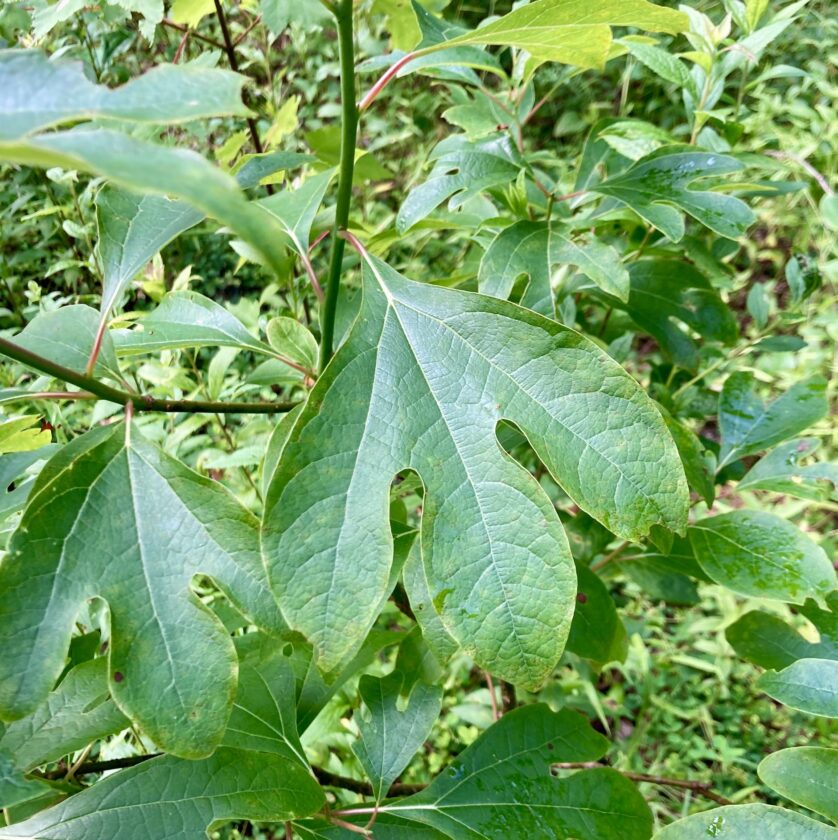
Secondly, the sassafras tree has three different leaves on it. It has a leave with a single lobe, a leaf with two lobes that looks like a mitten, and one with three lobes. Though I’m sure it’s not the only plant in nature with more than one leaf this is still fairly unique.
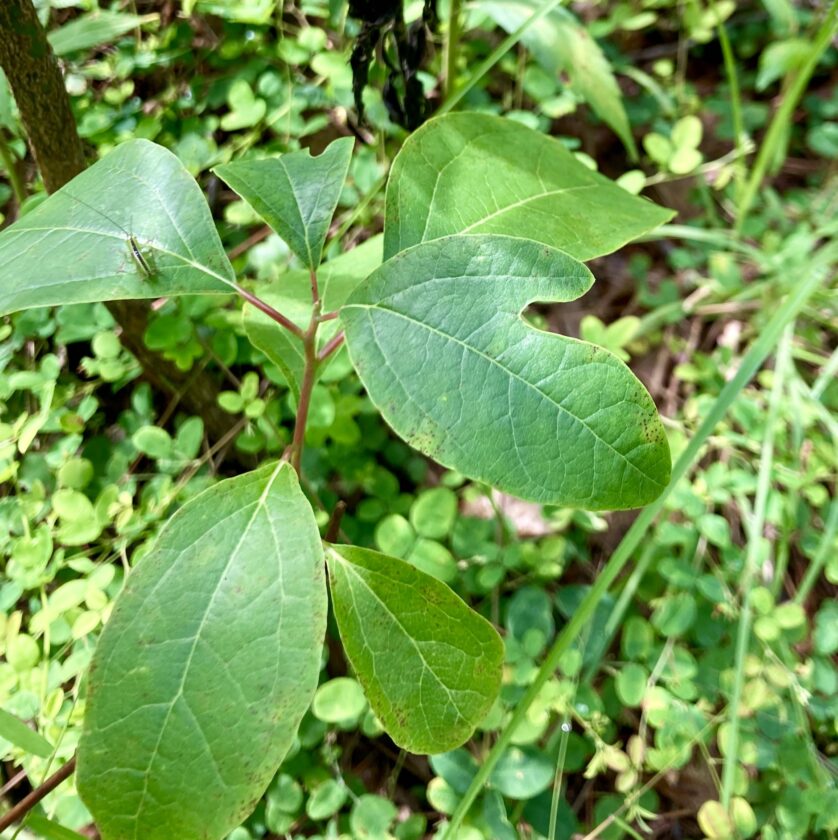
The roots are the usable part of the plant. Try to find young seedlings, and try to get as much of the root system as possible. Though I don’t love pulling up a tree just so I can have a warm beverage, sassafras trees are extremely common.
Black Birch
Another of the first trees I learned to ID was the black birch. I learned this one because of the delicious wintergreen smell you get by scratching the bark on a young branch.
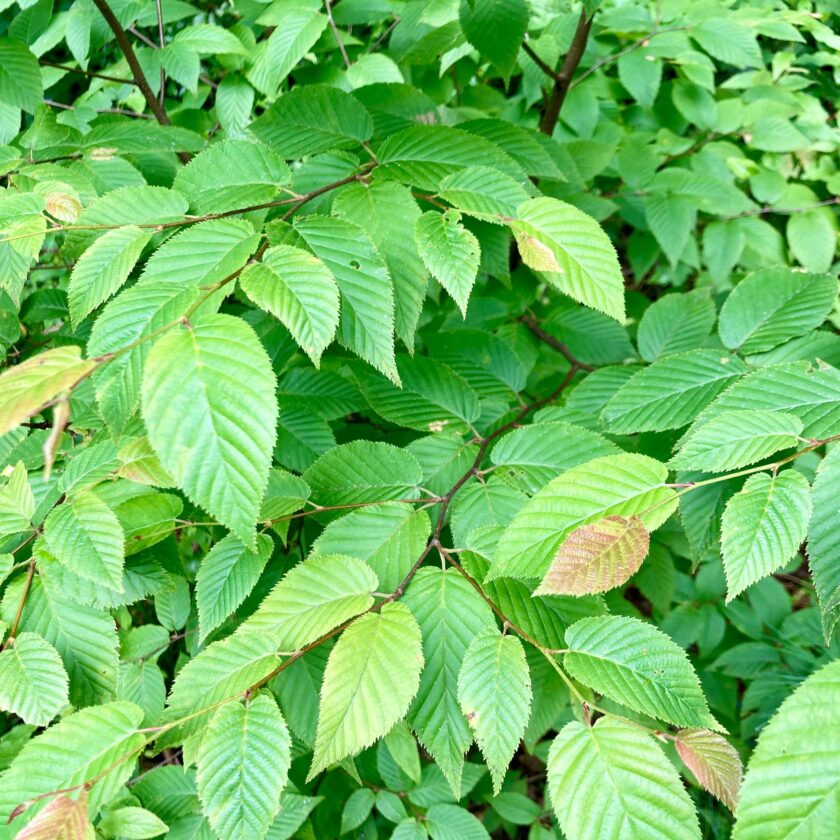
Scatch-and-sniff is an easy way to confirm the identification of a black birch – I have found a few trees that resemble black birch but are ruled out for lacking the wintergreen smell.
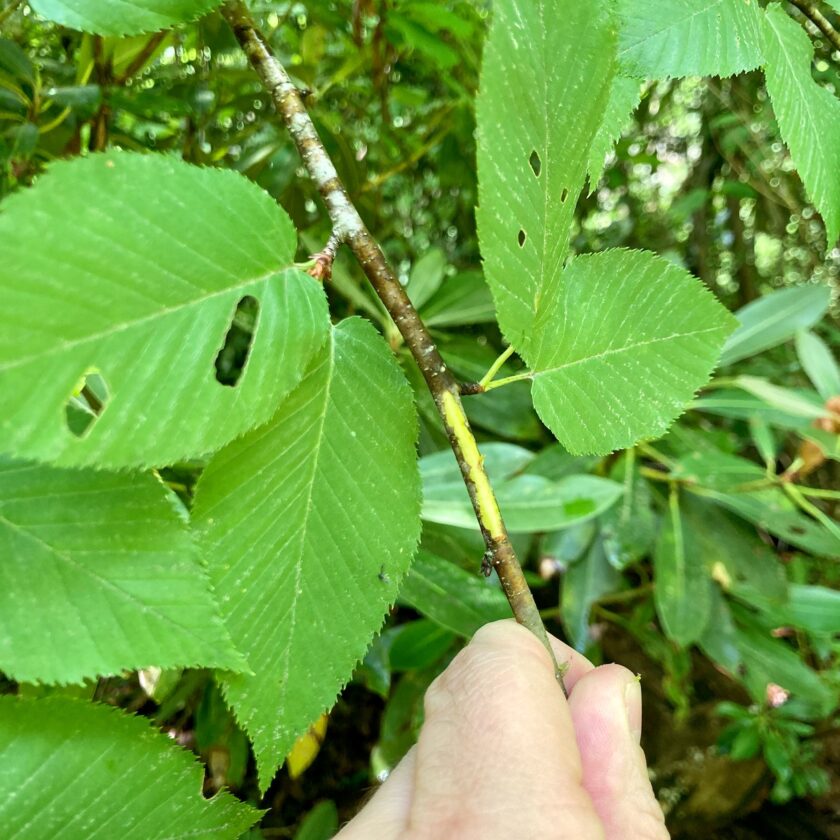
A bunch of small branches steeped in water makes a really good birch tea. I had quite a few cups of this stuff as a kid. The cambium layer of birch bark can eat eaten.
Closing Thoughts
I have had a great time getting acquainted and reacquainted with some flora in the forest. Though survival eating would still be sparse I still feel much better than I did a few months ago when I really started trying to identify wild edibles. There is a LOT of stuff out there. That being said, surviving on what you could forage would be hard. You’d probably eat a lot of the same stuff (like dandelion and plantains) and get sick of it. I also expect you’d still be hungry most of the time – very little of this stuff offers a substantial amount of calories. For the mental/emotional boost and some energy it’s a really good idea to know at least a few dependable wild edibles that you can turn to.
I promise I will be back with more wild edibles of the southern Appalachians! Once I got going with this list I realized I know many more wild edibles than I thought I did. There is still plenty more to cover, so expect this article to be bumped back to the top before long. Also expect to see new pictures as grapes and elderberries begin to ripen. Stay tuned!
Changelog:
08/07/22 – Added Staghorn Sumac, Red (and white) Clover, Creeping Charlie, Black Huckleberry, updated section on American Chestnuts.
09/05/22 – Added Persimmon, section on roots/tubers and added Ramps, added new photos of Chicory flower and Ripe Elderberries
07/23/23 – Added Purslane





